














By Feona Morrison
PRESIDENT Dr. Irfaan Ali, on Saturday, welcomed the announcement of an immediate ceasefire between nuclear-armed neighbours India and Pakistan, calling for all parties involved to honour the agreement and allow peace to flourish in the region.
In a brief but pointed statement posted to his official Facebook page, President Ali said, “I welcome the immediate ceasefire between India and Pakistan. According to the Ministry of Information and Broadcasting in India, firing on the ground, air, and sea from both sides will cease immediately.”
“We urge all parties to respect the terms of the ceasefire and allow peace to foster and grow,” he added.
President Ali’s remarks reflect Guyana’s deep commitment to peace and stability on the global stage. As a country that shares strong diplomatic ties with both India and Pakistan, Guyana has long stood for dialogue and
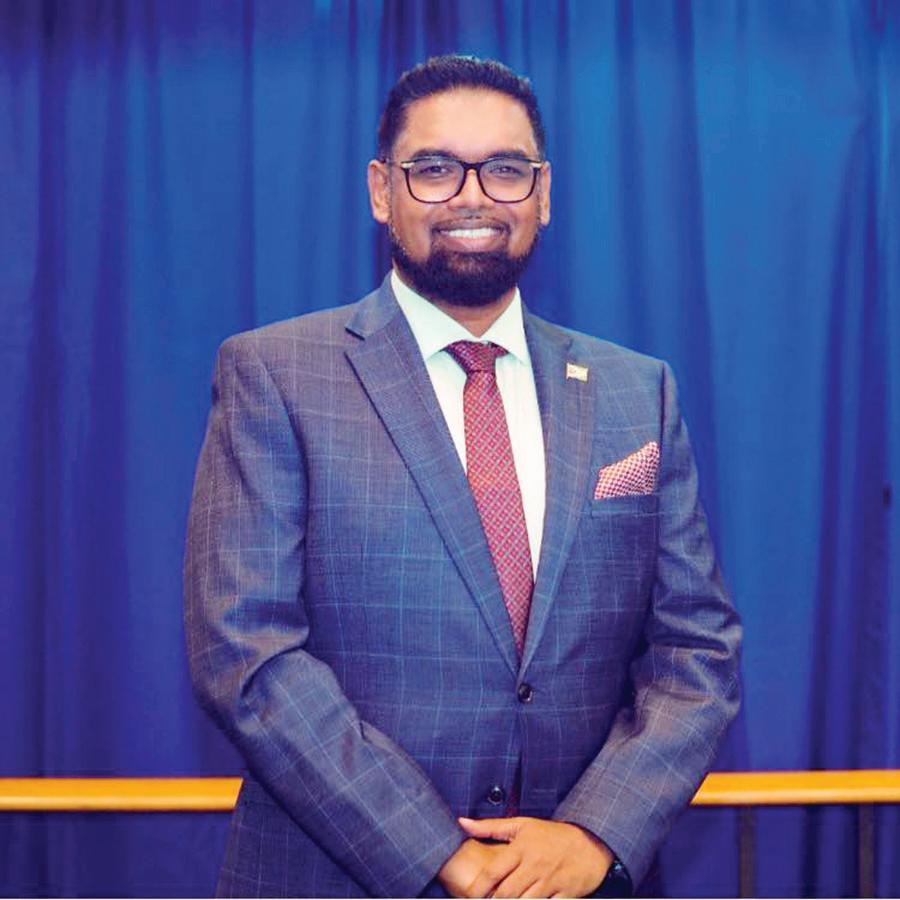
peaceful solutions to conflict, values it also upholds in its own approach to resolving the border controversy with neighbouring Venezuela.
India’s External Affairs Minister, Dr. Subrahmanyam Jaishankar, also issued a statement on his official Facebook page, confirming the agreement and clarifying India’s position.
“India and Pakistan have today [Saturday] worked out an understanding on stoppage
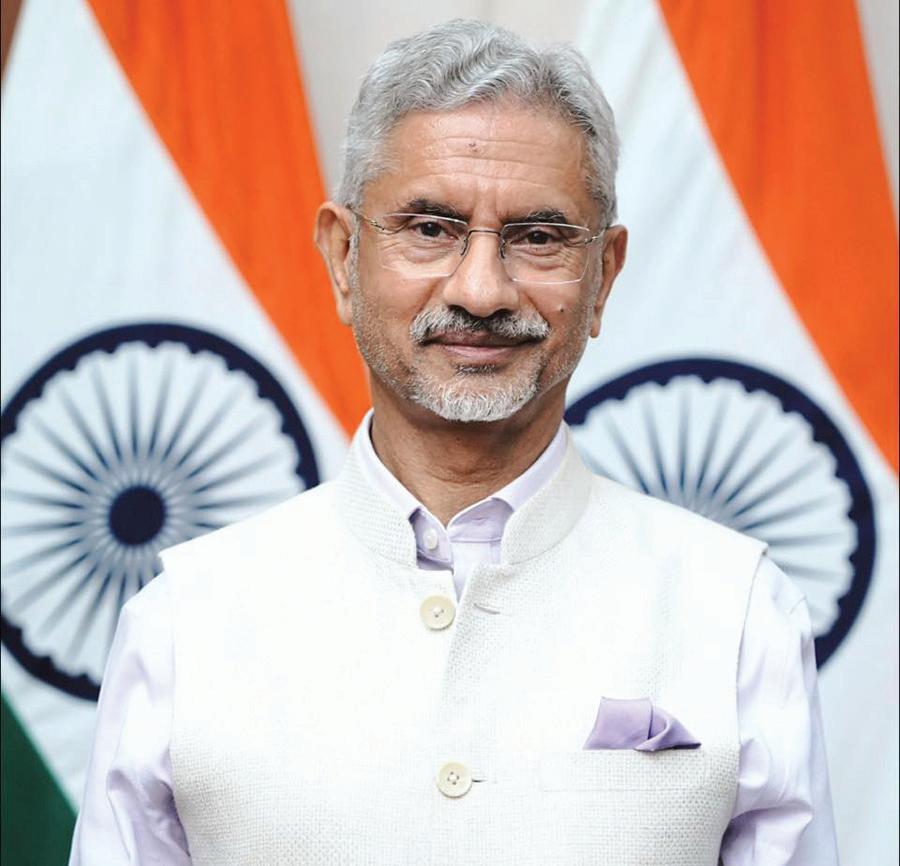
of firing and military action,” Jaishankar stated.
However, while acknowledging the ceasefire, the Indian Foreign Minister emphasised that India’s broader security concerns remain unchanged, particularly on the issue of terrorism.
“India has consistently maintained a firm and uncompromising stance against terrorism in all its forms and manifestations. It will continue to do so,” he wrote.
His comments underscore India’s ongoing concerns about cross-border terrorism, which have been a central point of contention in Indian-Pakistani relations for decades.
Tensions between India and Pakistan rose drastically in April 2025 following the killing of 26 individuals in an assault on visitors close to the resort town of Pahalgam in Indian-controlled Kashmir, as per the BBC. It was the
deadliest attack on regular citizens in the district in over two decades, the BBC said.
The BBC reported that Kashmir is claimed in full by India and Pakistan, but administered only in part by each since they were partitioned following independence from Britain in 1947.
In response, India launched missile strikes two weeks later on targets located in both Pakistan and Pakistan-administered Kashmir, prompting widespread international concern and renewed calls for restraint from both sides.
The BBC said that on May 7, 2025, Indian Foreign Secretary, Vikram Misri, said Pakistan-based Lashkar-e-Taiba militant group carried out the attack.
An article published by the BBC a few days ago noted that: “In the two weeks since, both sides had taken tit-for-tat measures against each other - including expelling diplomats, suspending visas and closing border crossings.”
The BBC noted that
Kashmir remains one of the most militarised zones in the world, with the long-standing territorial dispute continuing to fuel instability across the region.
The ceasefire announcement is a landmark in the tempestuous and frequently troubled relationship between India and Pakistan, both of which have fought numerous wars and been constantly at each other's throats along their contested borders since gaining independence.
India has been accusing Pakistan for a long time of funding militant groups operating in the disputed region of Kashmir—a claim Islamabad denies.
The new ceasefire comes after months of increased tensions and periodic crossfires along the Line of Control (LoC), the de facto border between Indian-administered and Pakistani-administered Kashmir.
The ceasefire has been welcomed by several international actors as a step in the right direction towards regional stability.

By Feona Morrison
THE International Monetary Fund (IMF), in its 2025 Article IV Consultation Report, has commended Guyana’s careful and rules-based management of its Natural Resource Fund (NRF), calling it a key pillar of the country’s long-term economic strategy.
The IMF noted that “fiscal policy follows self-imposed limits, ensuring an accumulation of substantial savings in the NRF.”
These savings, it noted, are governed by a fiscal framework that includes “rules on withdrawals
Rising oil production and falling investment costs are expected to further strengthen this position.
The report outlined a forward-looking scenario in which NRF withdrawals, subject to the higher ceiling, are used to fund capital expenditure, while the non-oil primary deficit gradually shrinks.
Under these conditions, the IMF projects that “NRF assets will peak at about 360 percent of non-oil GDP in 2042.”
This outlook, the IMF emphasised, supports the government's “ambitious investment goals while preserving fiscal sustain-

lished the NRF, a fund designed to manage the country's natural resource wealth.

from the NRF to the budget (approved by parliament) and statutory debt limits.”
In a major policy update, it said the government raised the ceiling for NRF withdrawals in 2024. According to the IMF, this adjustment “would allow for maintaining high capital spending while closing the overall fiscal deficit over the medium term as oil revenues increase.”
ability and macroeconomic stability.” The Natural Resource Fund’s assessment signals growing confidence in Guyana’s ability to manage its resource wealth responsibly.
The IMF's endorsement affirms that the NRF is not just a savings tool but a strategic engine powering Guyana’s transformation. The Natural Resource Fund (NRF) Act of 2021 in Guyana estab-
The Act outlines the framework for handling oil revenues, ensuring transparent and accountable management for the benefit of current and future generations. The Bank of Guyana is responsible for the operational management of the Fund.
Guyana’s NRF received a total of US$605.5 million in deposits during the first quarter of 2025.
This is according to
an NRF Receipts report published in the Official Gazette on April 5, 2025, which detailed all petroleum-related inflows between January 1 and March 31, 2025.
All of Guyana’s oil production originates from the offshore Stabroek Block, a prolific deepwater basin. The block is
and China’s CNOOC with the remaining 25 per cent.
Since the discovery of oil in 2015, three major projects—Liza 1, Liza 2, and Payara—are collectively producing over 600,000 barrels of oil per day in the Stabroek Block.
This production is supported by three Floating Production Storage and
set to begin production in 2025, 2026, and 2027, respectively. Each project is estimated to generate 250,000 barrels per day, bringing the total offshore oil output in Guyana to more than 1.3 million barrels per day.

operated by U.S. oil giant ExxonMobil, which holds a 45 per cent stake.
Its partners include American firm Hess Corporation with 30 per cent,
Offloading vessels: Liza Destiny, Liza Unity, and Prosperity. Three other development projects in this block—Yellowtail, Uaru and Whiptail—are
The prolific Stabroek Block has solidified Guyana’s position as a major player in the global oil industry and the fastest-growing economy in the world.
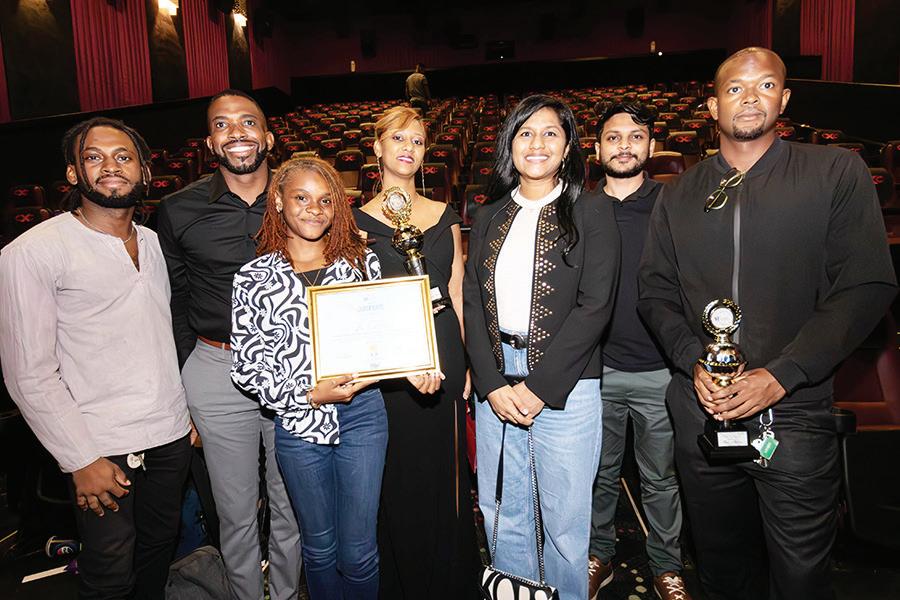
The Ethnic Relations Commission (ERC) hosted its Film Competition Awards Ceremony and Screening on Friday last at Caribbean Cinemas, Giftland Mall.
A press release from the ERC stated that the event focused on the theme “Promoting Ethnic Respect and Unity,” and sought to celebrate the winning films that exemplified messages aimed at educating the public and countering racism in Guyana.
The ERC Film Competition, which ran from November 1, 2024, to February 28, 2025, invited filmmakers to submit compelling stories that promote understanding,
empathy, and appreciation for Guyana’s cultural diversity. A total of 14 entries were received, highlighting the rich talent and creativity within the growing local film industry.
ERC Chairman Shaikh Moeenul Hack commended the entries, noting, “We have witnessed a commendable display of creativity, storytelling prowess, and technical skill from filmmakers across the nation. The sheer diversity of narratives, the innovative approaches to filmmaking, and the depth of emotion captured on screen have truly impressed us all.”
Entries were evaluated by a panel of independent


judges: Mr. Andrew Kendall, Mr. Dexter Pembroke, Ms. Colleen Humphrey, and Mrs. Gem Madhoo-Nascimento. Films were judged on criteria such as story and creativity, directing and acting, sound and music, cinematography, production design, and overall impact.
According to the press release, Mrs. Madhoo-Nascimento noted, “The stronger entries in particular should be commended for thoughtful assessment of the issues surrounding race, depicted in the conversations between parents and children.”
ERC Commissioner and member of the PR/Media Sub-Committee, Deon Dick (Ras Khafra), highlighted the significance of the competition. “This competition isn’t just about awards – it’s about encouraging voices that don’t always get the spotlight. It’s about giving space to stories that help us understand one another
better,” he stated.
The top three winners were “Between Oceans” by Rae Wiltshire, which gained 1st Place; 2nd Place went to “Luna” by Keon Hector, and 3rd Place was copped by “Four Years Later” by Omari Joseph.
Consolation prizes were also awarded to Daniel De Freitas, Sonia Yarde, Vishan Harripersaud, Jerimiah James, Deborah Lambert, Cordell A. McClure, and Ishmael Abrams. In addition to the awards ceremony and screening of the top three films, several individual accolades were presented, with the Best Actor going to Paul Budnah, Best Actress being awarded to Marissa Morgan-Bonie, Best Director to Rae Wiltshire and Best Script/Screenplay being won by Omari Joseph
Over $3 million in cash and prizes was distributed.
The ERC will soon release the top ten films on its so-

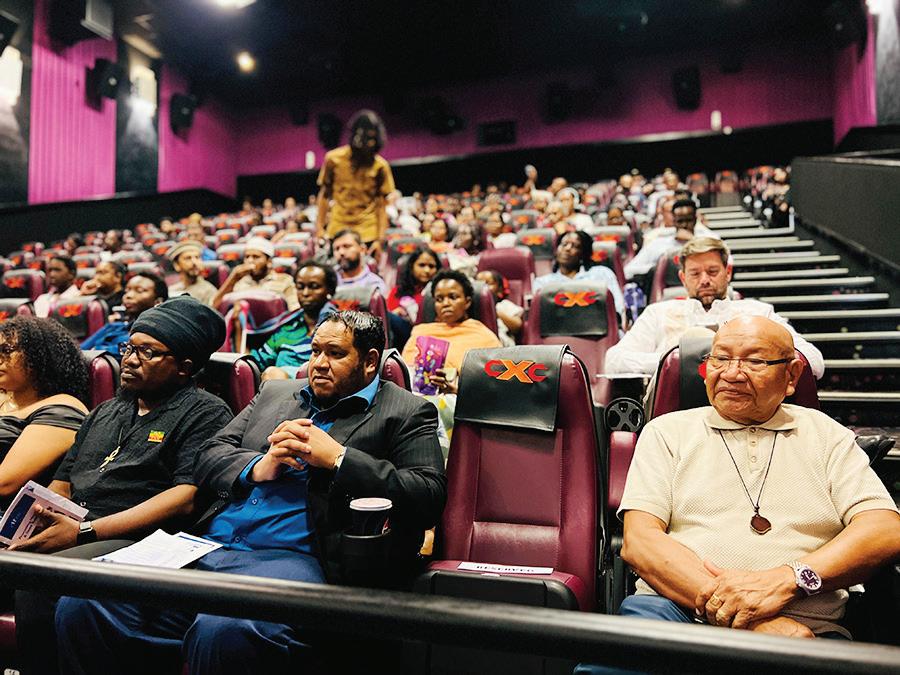
cial media platforms. The competition forms part of the ERC’s ongoing efforts to use film as a powerful tool to promote peace, inclusion, and mutual respect among Guyana’s diverse population. A free screening of the award-winning films was also open to the public on Saturday at Caribbean Cinemas.
This initiative follows last year’s ERC jingle competition, continuing the Commission’s mission to boost awareness, foster unity, and eliminate misconceptions surrounding race and ethnicity in Guyana.

By Shaniya Harding
THE lines of political disagreement faded to a blur, while the noise of differing opinions stood at a standstill on Saturday at news of the passing of former parliamentarian, Amna Ally.
The shock was enough to elicit heartfelt condolences to her family and friends from members of both the governing People’s Progressive Party/Civic (PPP/C) and the opposition A Partnership for National Unity + Alliance For Change (APNU+AFC).
The Sunday Chronicle has been given to understand that Ms. Ally passed away at the Georgetown Public Hospital Corporation (GPHC) on Saturday morning, after being rushed there on Friday following heart complaints.
She was, reportedly, admitted to the institution’s Intensive Care Unit (ICU) in a critical condition.
President Dr. Irfaan Ali, who was among the first to react upon learning of her demise, said in a passionate Facebook post, “On behalf of the Government of Guyana and my family, I extend our heartfelt condolences on the passing of former Parliamentarian, General Secretary of the PNC/R, and Minister of Government, Amna Ally. Amna had a long career as a Parliamentarian dating back to 1985.”
Moreover, the Head of State outlined the significant posts held by Ms. Ally throughout her political life, stating, “Throughout her parliamentary career, Ms. Ally held several positions, including Chairperson of the Social Services Committee, and Member of the Parliamentary Management Committee, Standing Orders Committee, and Appointive Committee. Additionally, she served as the Minister of Social Protection from 2015 to 2020.”
President Ali went on to say in his post that Ms. Ally’s contributions went beyond parliamentary affairs, as she was also a long-serving educator. “Beyond her legislative contributions,” he said, “Amna has also served as an educator for several decades. We
extend our deepest sympathies to Amna’s family and loved ones during this time of mourning. May her soul find eternal peace.”
Minister of Legal Affairs and Attorney-General Anil Nandlall shared similar sentiments as he expressed his condolences to the family and friends of Ms. Ally.
THE CAMARADERIE
In his message, Minister Nandlall reflected on their personal rapport despite political differences.
“I extend my deepest condolences to the relatives, especially Farzana, and friends of Amna Ally, who departed this world earlier today. Although we were on opposite political sides, and obviously saw things differently, I think we both enjoyed the common ambition of working for a better Guyana. She was an exceptional politician, and served her party and its constituents with admirable loyalty and commendable commitment,” he said, adding:
“I salute her long years of public service and public life. She made a solid contribution to debates in the National Assembly, often punctuated with bouts of her peculiar but inimitable humour. Despite her strong political persona, personally, she was kind, warm, and had an extraordinary sense of humour. She and I enjoyed a good personal relationship for many years. May her soul rest in peace.”
Also sharing condolences on the loss of the politician was the People’s National Congress Reform (PNC/R), which, in a formal statement on Facebook, said:
“The People’s National Congress Reform (PNC/R) is deeply saddened to learn of the passing of our former General Secretary, Ms. Amna Ally. A dedicated and long-standing member of our party, Ms. Ally’s unwavering commitment to the ideals of the PNC/R and her nation has left an indelible mark on our history.”
The party further highlighted in its statement her multifaceted service, stating, “Ms. Ally’s service to her country was multifaceted. She was a committed


The late Amna Ally, a long-standing and significant figure in Guyana’s political landscape
educator, a valued member of the Young Socialist Movement (YSM), and served in various capacities within the party. Her leadership and dedication extended beyond party activities, as she served as a Member of Parliament, and held the position of Minister in the Government under the APNU+AFC administration from 2015 to 2020.”
EXEMPLARY SERVICE
It went on to say, “Throughout her life, Ms. Ally exemplified service, integrity, and patriotism. Her contributions have profoundly shaped our party and our country, and her legacy will continue to inspire us. The PNC/R offers heartfelt condolences to her family, friends, and all who knew her. ‘Inna lillahi wa inna ilaihi raji'un’ We belong to Allah, and to Him we shall return. May Allah grant her eternal rest, and provide comfort to those she leaves behind during this difficult time.”
The AFC also extended condolences to the family, friends and colleagues of Ms Ally.
Its message read: “The Alliance For Change extends heartfelt condolences to the family, friends, and colleagues of Ms. Amna Ally
on her passing, which occurred today, May 10, 2025. Ms. Ally was a formidable presence in Guyanese politics, and a dedicated servant of the people. Her political journey, spanning several decades, was marked by loyalty, commitment, and a deep sense of duty to the nation. She served in several key roles within the People’s National Congress Reform (PNC/R), eventually becoming its General Secretary, a position she held with firmness and clarity of purpose.”
The AFC also sought to highlight some of Ms. Ally’s more crucial roles, stating, “Most notably, she served as Minister of Social Cohesion from 2015 to 2020 in the APNU+AFC Coalition Government. In this capacity, she championed the importance of national unity, inclusion, and healing. Her work in that ministry was pioneering, as it sought to bridge divides, and cultivate a stronger sense of shared identity and mutual respect across the diverse fabric of our society. Amna Ally was widely respected across political lines for her unwavering commitment to her party, and her clear, forthright style of leadership. She was a tireless campaigner, and an organiser par excellence, whose influence was felt both at the grassroots and national levels.”
In closing, the AFC said: “At this moment of mourning, we recognise and honour her long and impactful service to the nation. While our political philosophies may have at times diverged, we acknowledge her role as a patriot who gave of her time, energy, and intellect to the development of Guyana. The Alliance For Change stands in solidarity with her family, loved ones, and colleagues as they grieve her loss. May her soul rest in eternal peace, and may her contributions to Guyana’s democratic journey be long remembered.”

Former President David Granger, who also issued a statement on Amna’s passing, remembered her lifelong service to the party and nation. “Amna Ally… enriched the People’s National Congress for five decades through her political and parliamentary service, and her personal and professional qualities. Ms. Ally’s political career began in 1970, when she was only fifteen years old. She served under the first four leaders of the PNC, Forbes Burnham, Desmond Hoyte, Robert Corbin and David Granger.”
Granger’s statement recounted her rise through the party’s ranks, noting, “Ms. Ally entered Parliament in 1985, and, except for a three-year period between 1998 and 2001, served as parliamentary representative of the Mahaica-Berbice Region. She was the first Minister of Social Cohesion and Minister of Social Protection in the APNU+AFC Coalition administration from 2015 to 2020.
“As a graduate of the University of Guyana and the Cyril Potter College of Education, and a trained teacher, she managed party administration, mobilisation and operations with a steady hand. She was the undisputed and untiring motivator behind the innovative 3 ‘B’s (buses, boats and bicycles) programme, which allowed free
transportation for public school children for the first time in Guyana’s history.”
The former president remembered Ally not only as a political leader, but also as a community figure, saying: “A Moslem, she was a cheerful and dutiful organiser of observances for children’s entertainment during major national and religious festivals. Whether in or out of government, she was able to cultivate cordial relations with opposition and government officials and former party members.”
In closing, he said: “Ms. Ally’s political service was exemplary, as was her determination to provide a good life for everyone, and to make the country a better place. The People’s National Congress is poorer for her passing. On behalf of my wife and myself, I offer condolences to Ms. Ally’s family during their time of grief.”
And, as the nation comes to terms with the passing of a woman who played a pivotal role in shaping its political landscape, many across party lines have paused to reflect on her unwavering commitment to public service, her passion for education, and her unwavering love for her country. Plans for her funeral and national recognition are expected to be announced in the coming days.



In a remarkable display of organisational defensiveness, the executive of the Guyana Press Association has managed to transform President Irfaan Ali's thoughtful request to discuss media evolution in the age of artificial intelligence into a supposed assault on press freedom.
Such a knee-jerk reaction illustrates a troubling disconnect between an institution that ought to be a voice for journalistic progress and the very real issues of modern media.
President Ali's World Press Freedom Day remarks were not, as the GPA seemingly interpreted them, some Machiavellian plot to control information flow, but an acknowledgement that the media landscape is undergoing a seismic shift necessitating contemplative consideration
by all stakeholders.
The irony is particularly stark given that the GPA's own recent media release for World Press Freedom Day explicitly acknowledged AI's potential both to benefit journalism through enhancing research capabilities and to damage it through generating deceptive content. How an organisation can issue a statement warning of AI's potential to undermine "trust in democratic institutions" one week, and denounce a presidential invitation to talk about the very same issues the next, strains rational explanation.
This contradiction suggests an organisation more interested in opposition than in constructive dialogue on the future of Guyana's media landscape. Some journalists, who highlighted the shortcomings in the GPA's state-
ments, rightly identified the heart of the issue when they stated that the President's message was simply "one that called for us to consider modernising our view of the media landscape".
This reasonable perspective was in stark contrast with the alarmist rhetoric engaged in by the GPA leadership, who instinctively conjured up dystopian scenarios of licensing essentials and authoritarian suppression from what was actually an invitation to debate. This sort of catastrophising does little to advance the cause of press freedom and much to illustrate an organisation wedded to outdated models of government-media relations.
The GPA's credibility issue extends beyond this singular incident. Journalists tartly pointed out that
the organisation is led by an "outdated Constitution" that does not accept workers of online media as members. In an era where online journalism has become central to information dissemination, this exclusionary position undermines any pretension the GPA might have to representing Guyana's media workers in the broadest sense.
A truly progressive press association would be opening its tent rather than defending ever-irrelevant boundaries. An organisation that presents itself as a champion of democratic values should at least demonstrate the same values in its own operations. If the GPA is issuing statements "filled with conjecture and attacks" without sufficient internal consultation, it has no moral high ground to lecture others
on responsible information practices.
It is the backdrop of Guyana's upcoming general and regional elections that renders this so particularly disturbing. The GPA itself has warned the public to be "extremely vigilant against misinformation and disinformation that can be generated using AI technology". But when the President opens a discussion on precisely how such threats are to be met, the association takes refuge in political grandstanding rather than in constructive exchange.
This suggests an organisation more comfortable with criticism than with the harder work of developing actual solutions. The legitimate pursuit of media development must never be mistaken for political interference. The GPA's ap-
parent inability to make this distinction nakedly exposes an organisation perhaps too accustomed to adversarial positioning at the expense of its higher mandate to improve Guyana's media environment.
If the GPA wishes to be relevant in Guyana's rapidly changing information landscape, it must move beyond reaction politics and selective outrage. It must sort out its internal contradictions, modernise its constitution to embrace digital media practitioners, and engage constructively with all stakeholders-including government-on the fundamental challenges posed by technological change. Only then can it credibly present itself as an effective voice for press freedom in the digital age.
Dear Editor,
In Saturday’s edition of the Stabroek News (SN) (May 10th, 2025), it has editorialised a letter in its May 9th, 2025, edition authored by Danuta Radzik, entitled “Guyana’s submission to UNHRC on adolescent births lacks correlation to other empirical data…”.
Notably, the SN editorial concludes:
“Ultimately, this issue transcends statistics; it speaks to the credibility of institutions and the moral responsibility of public ser-
vants entrusted with representing national realities on the world stage. Accurate, transparent data is not merely an administrative requirement—it is a cornerstone of good governance and a prerequisite for meaningful, equitable development”.
It is unfortunate that both the letter writer and the SN’s editorial staff did not seek an explanation for the variances, vis-à-vis, a deeper analysis of the various reports to understand and appreciate the differences in data source, the baseline data, time series and meth-
odology.
Had they done so, a simple and plausible explanation would have been derived from this procedure that accounts for the discrepancy, which has absolutely no bearing on the credibility of the data reported to the United Nations by the Government of Guyana (GoG).
In this regard, I have examined the various referenced reports by the different institutions, with a particular focus on their methodologies and data sources. In so doing, the explanation for the discrep-
ancies observed is that the various reports were based on different methodologies, estimates and assumptions. In the case of the UNFPA report for instance, the UNFPA conducted their own sample survey with a different baseline dataset and time series. It should be noted and appreciated that if different institutions or researchers utilize this methodology (surveys), each entity or researcher would likely generate a different sample size, different data coverage, and timelines, therefore, the results may
not necessarily be the same. There are likely to be inherent differences in the results.
Conversely, in the case of the World Bank’s report, the dataset therein was extracted from the World Development Indicators database. And if one were to examine that database, one would have quickly observed that the indicators therein are based on a completely different methodology, data source, base year, and assumptions altogether. In other words, these are estimates as opposed to actual updated datasets.
Accordingly, now that the GoG has submitted updated data from the authentic and original source, which is the Ministry of Health, these data will eventually be used to update the world development indicators database with the appropriate adjustments to their estimates accordingly.
Evidently, these are the nuances that SN and the author of the referenced letter do not appear to understand and/or appreciate.
Sincerely, Joel Bhagwandin
Dear Editor,
A FAMILY, grandmother and aunt, two young girls, one 11 years old and one eight years old, and a young boy, six years old, go on a family outing to a hotel swimming pool. After they had been there for a while, the grandmother notices that the 11-year-old girl is not with them. They look for her, can’t find her and become alarmed.
I remember almost exactly the same thing happening to me many, many years ago. My wife and I and my young daughter, who was around the same age, went swimming at a club with a swimming pool. We were all sitting down together having a drink near the pool, and I noticed that my daughter, Ayla, was not with us. I did what any father in those circumstances would immediately do. I went straight to the swimming pool to look for my daughter, and got there just in time to see her diving into the pool off a diving board at the pool and then floundering in the water. Naturally, I dived in after her and pulled her
out. That, sadly, is not what appeared to have happened with young Adriana Younge, who went missing from her family on 23rd April, when they all went swimming at the Double Day International Hotel pool.
In spite of all that has been written and reported, it remains unclear just how long a time elapsed from when Adriana’s grandmother noticed her missing and they started to look for her. What also remains unclear is whether they first and immediately searched for her in the swimming pool where she had been swimming. Reports indicate that they first went to the front desk looking for her, and then, it is reported, they looked for her at the pool and did not find her.
Also, very unclear, is who looked for her, did they sound the alarm and clear the pool of other persons who must have been swimming in it, was the pool thoroughly searched by not only looking into the pool but by someone getting into the pool and searching every inch of the bottom of the pool? None of that seems clear and, all of
that, given everything that happened thereafter, needs to be subjected to a thorough investigation.
All the while, an increasingly distressed mother missing her child, eventually learn some 20 hours later that she had been discovered under the water in the pool and the nation grieves with her.
Again, from what was reported, the matter was then brought to the attention of the police and, again, there is controversy as to whether the police ordered and carried out a complete and thorough search of the pool and the entire hotel premises.
It appears that they did not do so, and that the police response to an escalating panic and anger was wholly inadequate, including even an entirely false report that Adriana had been seen on a camera leaving the hotel premises, resulting in all that has followed.
It did not take long for politically-driven, organised and financed violent protest to take place, which has done nothing but exploit the family in distress, and served to further the aims and ob-
Dear Editor,
The pain and frustration of the Younge family are deeply understandable. Their call for answers deserves respect and care. However, dismissing Leonard McCoshen as a potential investigator simply because he is retired risks overlooking a valuable opportunity for a credible and independent inquiry.
Mr. McCoshen’s retirement does not diminish his credibility. Rather, it strengthens it. No longer tied to any institution, he brings an impartial voice free from political or organizational pressure. His decades of service with the RCMP, handling sensitive and high-profile investiga-
tions, reflect a solid track record of professionalism, fairness, and discretion.
Unlike many private investigators, Mr. McCoshen brings national-level experience and methodologies respected across borders and agencies. He has access to networks and resources that others simply do not. His only stake in this matter is the truth - not reputation, not politics, and not profit.
The Younge family is right to want answers. But effective answers come from people whose work is trusted and whose findings will stand up to public and legal scrutiny. McCoshen is such a person. Turning him away could mean starting over with someone
jectives of the political parties determined to remove the governing PPP by any means, fair or foul.
A plethora of opinions, accusations, rumours and misinformation has flowed across social and established media. Some of it genuinely sincere, but most of it thor-
oughly disgraceful, irresponsible and dangerous.
Our government has, so far, done all it can to respond to the needs and demands of the family, and the situation, which continues to be exploited, and now needs to get on top of and fully in control
of this matter by ensuring a professional investigation is conducted, meeting international best practices and standards and, most importantly, providing closure to the family who have suffered this tragic loss.
Yours sincerely, Kit Nascimento
less experienced, less connected, and ultimately less effective.
At a time when clarity and closure are most needed, the focus should be on integrity, competence, and results. Leonard McCoshen offers all three.
Yours respectfully, Dr. Devanand Bhagwan


LAST week, President Dr. Mohamed Irfaan Ali invited the local, regional and international media and special guests in Guyana to a brunch in honour of World Press Freedom Day.
He was also accompanied by the Prime Minister, Retired Brigadier Mark Phillips, Minister within the Office of the Prime Minister with Responsibility for Information and Public Affairs, Kwame McCoy, to the brunch held at the Baridi Benab, State House, Georgetown.
During the event, President Ali set the mood for the
media brunch with a series of thought-provoking questions that needed to be answered appropriately about the changing dynamics and environment in which the media operates today. The president spoke of information, communication, and media landscapes, and the role that Artificial Intelligence (AI) could play in democracies like ours, stating that, regardless, the government wants to promote more balanced, truth-based, non-biased and responsible journalism here.
President Ali was adamant that countries need to analyse

AI and its media use because of the consequences associated with the flow of bad, skewed, and false information, apart from its countless other benefits. The head of state said at the media brunch that Guyana must have a well-defined framework for artificial intelligence and digitisation.
He then committed that Guyana would produce, in 12 months, “a clearly defined framework for AI and digitisation in every sphere of national life... Because it is going to drive national and public life in ways that we have never seen before.” According to President Ali, he would be presenting the framework to other CARICOM countries at the meeting because he wanted to “develop on the evolving definition of the media.”
There was a sense of goodwill and good faith that prevailed at the media brunch during and after the President’s presentation.
Now, days later, the Guyana Press Association (GPA) has sought to criticise the president’s remarks in the most feral manner. While it is not clear at all what the GPA was harping loudly about, it said that aspects of the president’s speech were “regrettable, rather unfortunate and absolutely incorrect.” The GPA then accused the president and government of using the WPFD theme as “an entry point to signal your government's intention to pass legislation or regulations to curb press freedom.” The GPA said it was “disappointed” with the president's remarks.
Firstly, no one interpreted the president’s speech as an attack on press freedom or the media. No objective media personnel or representative exhibited discomfort at the media brunch or later in the press letter column, news, social media, and new media.
The head of state simply expressed his thoughts while stating the facts surrounding the theme “Reporting in the Brave New World: The Impact of Artificial Intelligence on Press Freedom and the Media.” He is entitled to his opinion and perspective.
The president's views should not be mixed with the government’s policy direction. They are two different yet similar sets of things. So, President Ali should not be criticised or ostracised for offering a perspective. He did nothing wrong or untoward by stating the situation in Guyana with the media and how they operate as it is, and how he views it through his experienced lens. What the president did was exercise freedom of

expression. Isn’t that what society is promoting? He is right!
The president’s speech was a brisk call to action. It offered many operating in journalistic realms here food for thought. He urged all present to be forward-thinking and transformative in the manner in which they use the AI technology, always considering the ethics and journalistic principles.
Instead of criticising the plan to share a clearly defined framework for AI and digitisation in every sphere of national life with other CARICOM countries, the group of Guyanese should welcome such a forward-thinking move. They should wait until the framework is available to criticise it and look at its real and hidden motives.
And the media is evolving. The media is dynamic and constantly changing. The media can be redefined in the age of AI. What is wrong with the president expressing this week with his colleagues in CARICOM? What is wrong with the Executive, if it wants to, express objective views on what that definition should be? Is that not freedom of expression? Inclusivity?
The president is not seeking to redefine media in Guyana or control the media or how information is relayed to the public. President Ali is not trying to censor or direct the flow of news and information, but rather has some ideas about the framework that could be drafted to allow a better flow of responsible, accurate, and true information from the media to the public. What is wrong here? Nothing.
Self-regularisation of the media is always best, but is failing in this modern age because gatekeepers are sleeping. AI and digitisation present the opportunity for a national conversation to take place about the newly and vastly changing nature of the traditional, social and new media, and its impacts now, and in the future, on the information landscape not only in Guyana but the wider field.
Secondly, the GPA must explain what it meant by releasing such a badly worded, confusing and vexing statement. Apart from its poor construction and verbose nature, the statement was a whole lot of nothingness. It was confusing and appeared very hostile to the president. The words disappointing and unfortunate
describe the content of that ‘cuss down’ and ‘cuss out’ statement.
It should have taken on a more respectful tone and nature. This statement is riddled with speculations, generalisations and errors. It ventures into political adventurism. Could the GPA explain, in short order, how does "evolving" definition of media equates to licensing, authoritarianism, and other threats to media freedom? Where is the link?
The GPA speaks of intimidation and harassment, but members of its executive are known to attack or incite others to attack media workers. The GPA must explain what led it or its members to release this crass statement. It is clear that GPA is not acting in favour of the media it says it represents. To respond to spurious claims and misinformation released to the public is to give them relevance and space.
Simply put, there is nothing to respond to because the public’s perception of the GPA and its selective outrage is known. The GPA is very hostile, bold and exhibits a type of ‘scrape-head mentality’ when dealing with the People Progressive Party both in and out of office over the past decade. Just look at the last four statements released by the GPA, and the public can be the judge.
The GPA must conduct a long-overdue process of introspection. It must examine ways it could evolve in this free environment if it wants to hold itself as the bastion of media ethics. If it wants to be a self-appointed arbiter of good governance, it has to rectify its constitution and violations of processes. There is yet to be a reform of its constitution.
The GPA has taken a hostile approach to the current administration as observed in several of its previous “cuss out” statements. This is not a body any right-thinking, upstanding and objective journalist or journalistic entity would want to be a part of, much less represent their views on World Press Freedom Day nationally.
Thirdly, the GPA has opened itself to attacks from the wider public and its own membership, which played no role in approving that statement. The journalistic corps in Guyana is side-eyeing the GPA and will boycott it once it continues to spiral out of
control, and goes down the line with these unnecessary, empty, and useless statements. Nobody ain’t knocking the GPA, but the GPA is hurt and crying wolf? No, seriously, the GPA has a growing tendency to arrogate to itself a misplaced sense of authority. Perhaps, it is getting back in campaign mode.
Finally, the GPA was invited to attend that State House event, but chose deliberately not to. The conversation would have been different today had it shown maturity, objectivity, and independence. It would have been different had the actors and officers been different and properly in place. It would have been different if it had not turned into a political arm of opposition, and had been apolitical.
The GPA must start to act like an adult. It must show its intellectual ability and mature intelligence when it seeks to confront the government on matters of media, harassment of its members and media freedom. Only by being a responsible stakeholder can it join in any conversation about the evolving media landscape, threats to the media here, and representation of the menu of concerns about existing and draft legislation.
The government seems not to be the GPA’s enemy. It has softened its approach in the last four years towards the media, but the GPA sees it as a threat, as opposed to a developmental partner that could make the reform it wants become a reality.
Borrowing some words from a Guyanese journalist, “There are more than one way to tell a story, more than one way to capture it, more than one way to disseminate it. This is not a fight for every storyteller or information disseminator to be called a journalist—it is a call to recognise that there are new agents within the media ecosystem. To exclude entire categories of workers who are becoming even more vital to this evolving landscape is a disservice.”
The GPA is a lost cause under its current leadership and Executive, but there is still time to become part of the national conversation.
DISCLAIMER: The views and opinions expressed in this column are solely those of the author and do not necessarily reflect the official policy or position of the Guyana National Newspapers Limited.
IN my Tuesday, May 6, 2025 column, I wrote: “In all the countries in the world, there would have been comments about the deportment of the parents of Adriana Younge. But either people are deferring to them because they lost a child or people are afraid to make pointed remarks, which are justified based on the things these parents have said so far.”
In my Wednesday, May 7 column, I wrote: “The investigators will do exactly that because in the mountain of emanations from the Younge family members, there are lines of questioning that the investigators will pursue. What makes anyone think that the investigators will not question the friends of the Younge family and the family itself?”
After hearing what Mikhail Rodrigues, a.k.a, Guyanese Critic, intoned on the Freddie Kissoon Show last Friday evening, I am convinced that Guyanese need to put questions to the family members of Adriana Younge – her father, mother and grandmother. If you did not see the interview with Mr. Rodrigues, you need to
in order to acquaint yourself with this multi-facet story.
It was Mr. Rodrigues who sent the theories of murder into a ubiquitous vortex in and beyond Guyana when he announced that he filmed the pool and did not see a body in there. When the body turned up in the pool the next day, conspiracy theorists multiplied by the hundreds and a politically fertile field was massively manured by anti-government actors.
I asked Mr. Rodrigues what time of day he filmed the pool. He said 10.30 PM. I enquired what equipment he used. His reply was his cell phone. I probed whether the pool was dirty, making visibility difficult. He agreed using the word “murky.” With definitive unambiguousness, I asked the Guyanese Critic if he had said publicly that there wasn’t a body in the pool.
He said he did, and he uttered that pronouncement because the mother said they searched the pool and Adriana’s body was not there. In a definitive walking back of his position, the Guyanese Critic agreed that his filming could not have been 100% successful.
Before we move on, three things from Guyanese Critic need to be aired: 1when asked for his take on the Younge tragedy, he said he thinks she drowned, but toxicology reports must be awaited; 2- his video of the pool revealed opaque parts of it; 3- his video shows a very dirty section of the pool at the pool’s deepest level and where the ladder is to make your descent.
Now, for some questions, and we start with the Younge family members. While there must be empathy and sympathy for the Younge family, Guyana must not be held at ransom by the Younge family. Is the Younge family involved in politicising the tragedy? Let’s look at the family’s attitude. Before the mother or any other human in Guyana, outside of the police force, saw even a paragraph of the autopsy report, the mother rejected her own esteemed pathologist from the U.S. and requested a second examination.
President Irfaan Ali visited the family’s home twice and spent far more time than a courteous visit takes. The President of Guyana promised the Younge family that
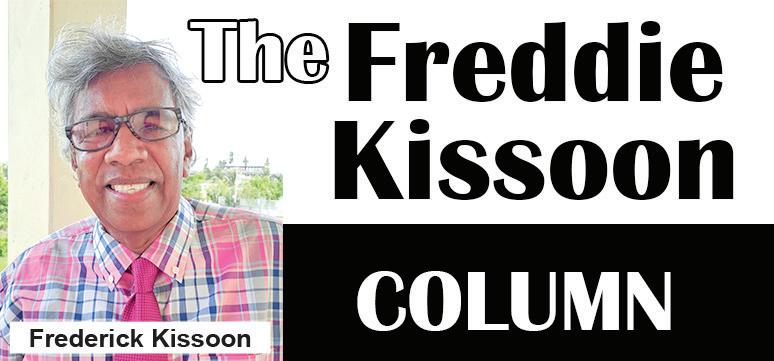
his government would do anything to bring justice to the family. Yet since those two visits, the family has repudiated the initial post-mortem finding and rejected the Government of Guyana’s selection of a highly trained retired Canadian forensic detective.
Is the Younge family telling this nation that it has no faith in President Ali? The answer will be interesting because the President had to agree to the Canadian officer. I am pointedly asking the Younge family if they have any faith in President Ali’s efforts. One hopes there isn’t an unfortunate answer because I believe the President is sincere in wanting to bring a definitive conclusion to the case.
My second question to the Younge family is, why isn’t there even an effort to meet the President halfway? Now for some more questions. Daren Wade is a dyedin-the-wool opposition supporter. Why was he removed as the family lawyer? Could it be that Wade was more concerned with protecting his legal credibility? What was it that was told to the family about Wade that caused Wade
to either remove himself or be removed? Alternatively, was Wade asked to make pronouncements that he chose not to?
Now I move to a sensitive area because libel may be lurking. Mr. Rodrigues on the show asserted what he knows about the Younge family doctor’s reason for diluting his relationship with the Younge family. I am not going to
say what Rodrigues said the doctor told him. But if true, there is definitely a strange, mysterious and depressing tale about to be born.
DISCLAIMER: The views and opinions expressed in this column are solely those of the author and do not necessarily reflect the official policy or position of the Guyana National Newspapers Limited.


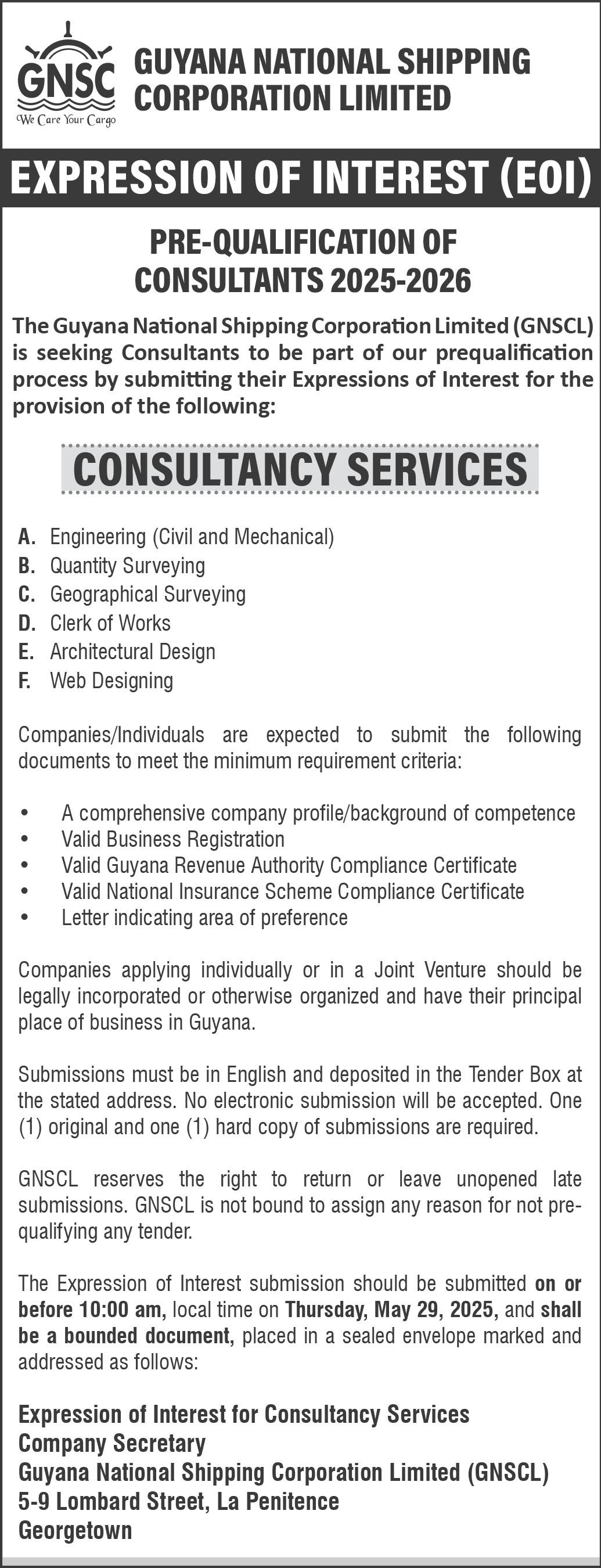
THE use of religious symbolism in the current military escalation between India and Pakistan is deeply troubling. After last month's terrorist attacks in Kashmir that killed 25 Indians, Delhi launched retaliatory strikes into Pakistani territory, calling it operation “Sindoor” – a reference to the red powder Hindu women wear to signify marriage. The New York Times reported that India’s message was clear: it intended to avenge the widows who lost their husbands in Kashmir.
Pakistan responded with its own operation, naming it “Bunyan Marsoos,” a phrase taken from a Quranic verse (61:4) describing believers who fight in God’s cause as a united, solid structure. If this conflict spirals further, readers will no doubt hear frequent references to the Line of Control (LoC), the
de facto border dividing the disputed region of Kashmir between India and Pakistan and which goes back to the 1947 partition, when India and Pakistan gained their independence from Britain. The United Nations does not regard the LoC as a legally recognised international boundary. It was established in 1949 after the first war between India and Pakistan, but was only formally designated the LoC following the 1971 war between India and Pakistan. Delhi administers Jammu, Kashmir and Ladakh while Islamabad administers Azad Kashmir and Gilgit-Baltistan. Whichever side of the LoC one happens to be, regardless of the season, this is one of the most stunningly beautiful places on earth. Even in the heart of winter, when I visited, its breathtaking landscapes at the foothills of the Himalayan mountains left a lasting
impression.
During Mohammad Zia-ul-Haq’s presidency (1978-88), his administration largely ignored militant groups in Pakistan that were carrying out attacks in Indian-administered Kashmir. While producing my first documentary for the Canadian Broadcasting Corporation’s The Fifth Estate, we interviewed former senior officials from Pakistan’s army and its Inter-Services Intelligence (ISI), including General Hamid Gul. He told us that in the decade following the Russian invasion of Afghanistan, their sole priority, shared with Western allies, was arming and training the Afghan Mujahideen. Security experts believe that Islamabad’s military focus on defeating the Soviets in Afghanistan in the 1980s allowed Pakistani militant groups to operate freely, including launching attacks in India. General Zia’s re-

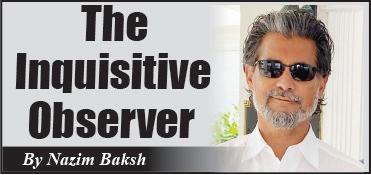
gime used these groups as a recruitment agency for fighters on the Afghan frontlines. Thousands were trained and armed by the state to serve its strategic interest abroad--better, in the eyes of the regime, to deploy them overseas than risk unrest at home.
On behalf of The Fifth Estate, I managed to score the only interview Mubarak Ali Shah Gilani ever conducted with a media outlet. Although he denied it, vid eo evidence obtained by the FBI showed Gilani, spiritual leader of Jamaatal-Fuqra, openly recruiting Americans, including a fair portion of Caribbean-born Muslim converts, to train and fight for the liberation of Indian-controlled Kashmir.
Years after the Soviet withdrawal from Afghanistan in 1989, and even after over two decades since 9/11, Afghanistan has remained
Pakistan’s number one national security priority. The bulk of Pakistan’s resources has been spent on policing the Durand Line, the 1,640mile border that divides the two countries, which meant fewer resources were dedicated to securing the 460mile LoC.
And it was during this period that a plethora of militant Kashmiri-oriented terror organisations began to flex their muscles. One of the most odious ones was Lashkar-e-Taiba (LET), which emerged in the late 1980s. It changed its name and dabbled in humanitarian projects to avoid sanctions, but in 2008, ten LET militants staged a vicious terror assault on several Mumbai’s prominent landmarks, including the prestigious Taj Mahal Palace Hotel.
By coincidence, a year earlier, I had dined at this hotel and marvelled at its

Mogul-era architecture and the hospitality of its staff. LET terrorists laid siege to the hotel for six days, during which time they violently assaulted staff and guests. The images were so shocking that they captured attention around the world. It even inspired “Hotel Mumbai,” a docudrama that recounts the events of the siege from the perspective of the hotel’s guests and staff.
India refers to the terror attacks as 26/11, and it is seared into their national conscience. In all, some 174 people, including 20 security force personnel and 26 foreign nationals, were killed. More than 300 were injured. Nine of the 10 LET terrorists were also killed, and one was arrested.
I co-produced a documentary on the siege of the Taj Hotel based on a firsthand account of the surviving LET recruit. At the time, it was not clear what role Pakistan-born Tahawwur Rana, a Canadian citizen and Chicago businessman, played in the broader conspiracy. However, he was convicted in the US for supporting a terror group and sentenced to 14 years in prison in 2013. Released in 2020 due to ill health, he was re-arrested a year later when India sought his extradition. After his meeting with Prime Minister Narendra Modi, President Donald Trump approved his extradition.
On April 10, India’s National Investigation Agency confirmed that 69-yearold Rana’s extradition had been successful, and twelve days later, militants carried out the horrific attacks in Kashmir. Only time will tell whether there is evidence linking Rana’s extradition to the attacks and what role exactly Pakistani-based militant groups played.
DISCLAIMER: The vie ws and opinions expressed in this column are solely those of the author and do not necessarily reflect the official policy or position of the Guy ana National Newspapers Limited.

“We are now looking for more space, our brand is looking for more space...It is a demand now that we have more, and we have more on hand. After all, they cannot wait for us to ship things in anymore, because everything is moving at such a fast pace,” Greene expressed. Greene reiterated that the oil and gas industry is growing and that the company and, by extension, the shipping industry are expanding at a ‘ridiculously’ fast pace.
New Logistics’ success story echoes a broader push by the Secretariat to ensure small and medium-sized businesses (SMEs)—especially those owned by women—have a seat at the table. Since becoming operational in January 2022, the Secretariat has prioritised giv-
IN the heart of Guyana’s rapidly evolving oil and gas industry, small but impactful enterprises are making waves, not only through the services they deliver but also by who’s behind them. One such enterprise is New Horizon Logistics, led by Managing Director Keranga Greene, which is among the growing number of women-owned businesses breaking into a sector long dominated by men. Registered with the Local Content Secretariat (LCS), New Horizon Logistics offers a diverse range of services tailored to support the oil and gas supply chain. Their services include license brokerage, procurement, public tender consultation, and even ocean/sea freight services from Florida to Georgetown. As a registered entity under the LCS, New Horizon Logistics is well-positioned to access opportunities and serve the needs of multinational oil operators while remaining deeply rooted in Guyana’s national development priorities.
ing Guyanese companies first preference in procurement and hiring within the oil and gas industry, with its Local Content Register acting as a key gateway.
According to the agency, a women-owned business is defined as one in which a woman or group of women holds at least 51% of ownership. To date, an estimated 75 women-owned businesses are registered with the Secretariat. It represents a significant leap forward for women seeking to break into a high-stakes industry once considered out of reach. However, New Horizon Logistics’ story showcases that women-owned businesses can also thrive in Guyana’s oil and gas sector.
The Secretariat has executed several outreaches and introduced programmes aimed at increasing registration among women entrepreneurs. These efforts include guidance on eligibility, tailored

workshops, and access to a growing network of suppliers and contractors. By focusing on capacity development, the Secretariat is helping ensure that local women are not only participants but key stakeholders in Guyana’s energy transformation.
For Greene, the message is clear, “Tap in now, don’t wait. Look for your
space. Get up your investment. Get up your business plan, which is very crucial. Know exactly what stationery the sector would have a demand for and stock up on those.”
As Guyana’s energy economy continues to develop, it’s critical that the development narrative includes inclusive growth.
Businesses like New Hori-
zon Logistics are proving that women don’t just belong in this space, they lead in it.
DISCLAIMER: The views and opinions expressed in this column are solely those of the author and do not necessarily reflect the official policy or position of the Guyana National Newspapers Limited.

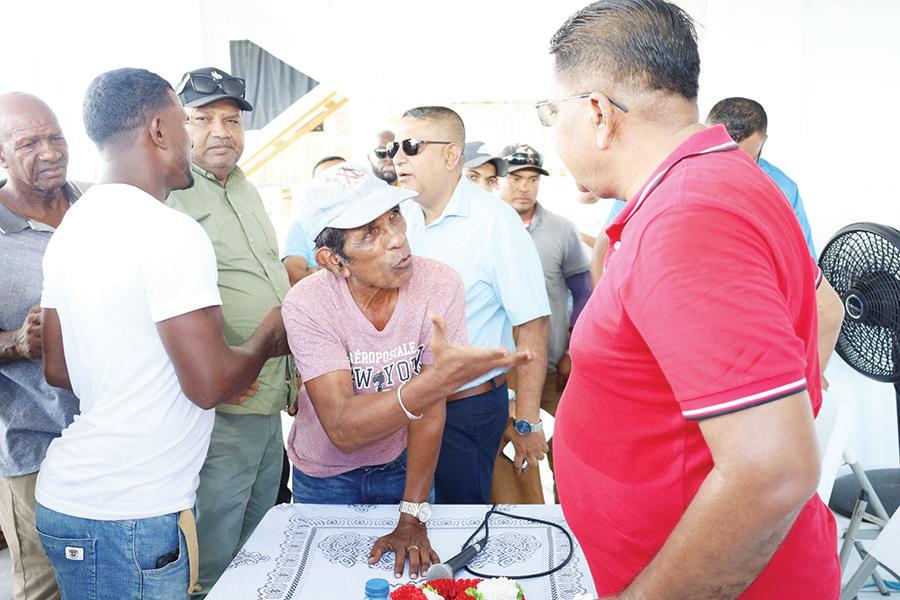
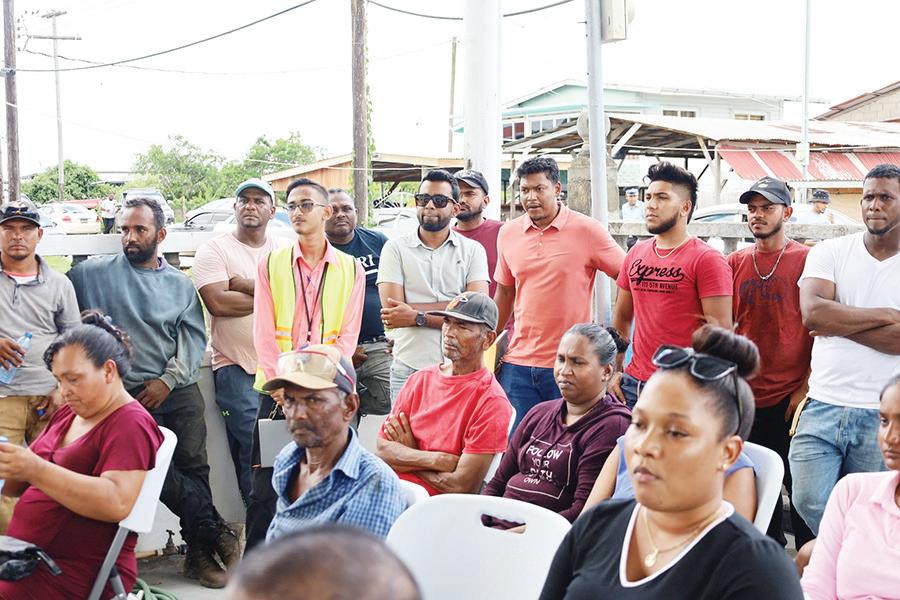
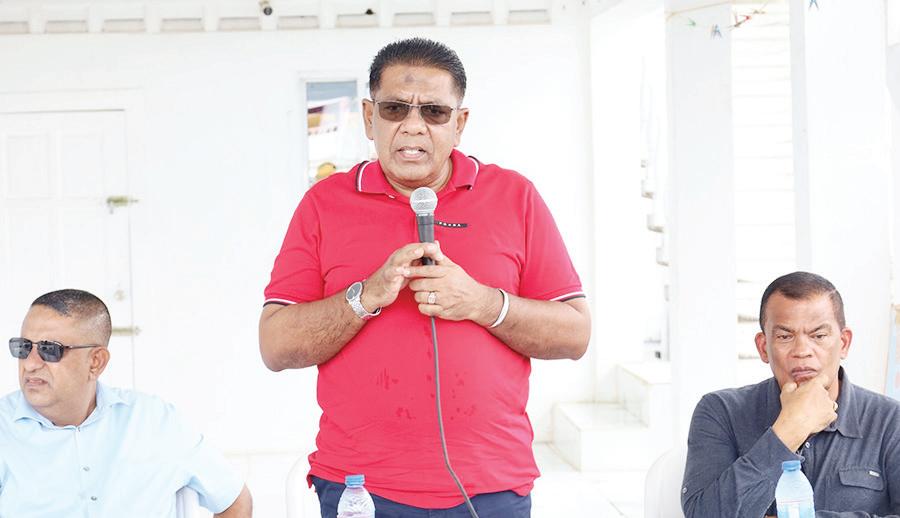
By Bebi Shafeah Oosman
IN a major boost for the country’s agricultural outlook, Minister of Agriculture, Zulfikar Mustapha, announced that Guyana is expected to harvest approximately nine million bags of paddy from the first
rice crop — a figure that could climb even higher with consistently strong yields.
The announcement came during a commu-
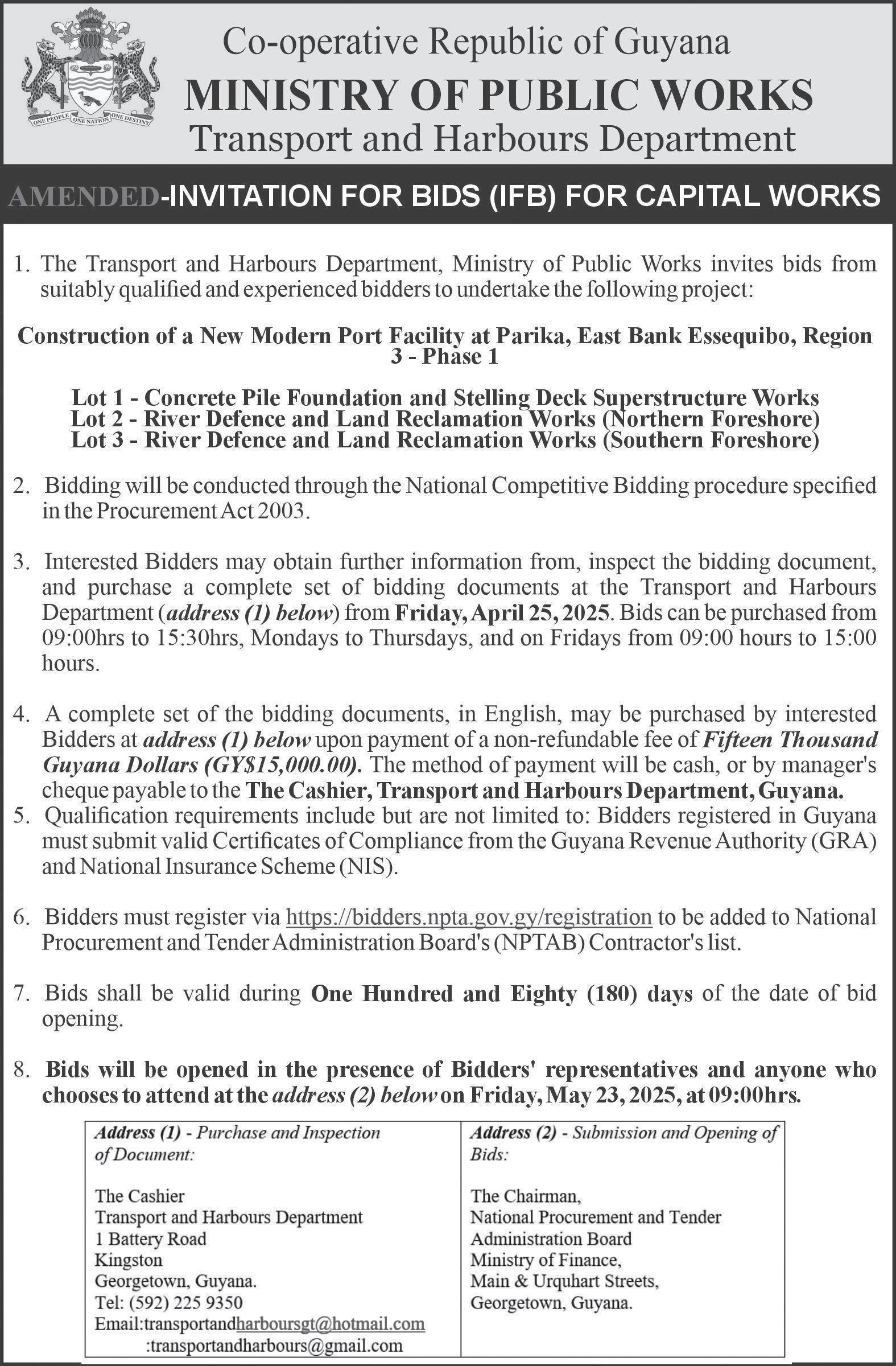
nity outreach in Grant 1803 Crabwood Creek on Saturday, where Minister Mustapha met with residents and farmers to address local concerns and provide updates on national agricultural development.
The high-yield projection is being seen as a strong indicator of the sector's upward trajectory, reinforcing the government's ongoing efforts to revitalise and modernise agriculture across the country.
Mustapha highlighted that this projected figure marks one of the strongest seasons for rice production in recent years, attributing it to improved cultivation techniques and expanded support services.
He noted, however, that the final tally could exceed the nine million mark if current yields hold steady in the coming weeks. He explained that rice farmers are benefiting from almost 45 bags per acre.
Further, Minister Mustapha also addressed concerns from rice farmers about the paddy price in the upcoming crop as he explained that while market prices remain unpredictable due to global factors, the government has continued to support local producers.
Mustapha noted that Guyanese farmers are in a fortunate position, emphasising that the government has subsidised the price of paddy, ensuring farmers receive
an added $300 per bag in order to maintain price stability and support their livelihoods.
Minister Mustapha explained that at the start of the first crop this year, millers indicated they were unable to sustain the existing paddy price, prompting a series of consultations.
“They said they couldn’t go beyond $3,700 per bag, so the government made the decision to step in and contribute $300 to every bag of paddy sold to the millers,” he said, highlighting the administration’s commitment to supporting both farmers and the industry.
According to Mustapha, there was a budget of $2 billion at the Guyana Rice Development Board to purchase fertiliser which had to be used for this initiative, a decision they quickly made.
Meanwhile, Mustapha on Saturday also signalled that the government is actively exploring the establishment of an agro-park, a move that could significantly boost employment opportunities and contribute to the revitalisation of the agricultural sector in the Upper Corentyne area.
According to Mustapha, discussions are currently underway to identify suitable land for the project, with the Guyana Sugar Corporation (GuySuCo) being considered as a potential
provider of the necessary acreage to the investors.
Given GuySuCo’s vast landholdings, some of which are underutilised due to the restructuring of the sugar industry by the previous administration, the initiative presents an opportunity to repurpose these lands for modern agricultural development.
The agro-park concept is designed to bring together farmers, agro-processors, and investors in a centralised location with shared infrastructure and services, thereby improving efficiency, reducing costs, and boosting production. If implemented, the park could support a range of agricultural activities from crop cultivation to agro-processing and packaging, making it a critical driver for agro-industrial development in the region and Guyana at large.
Furthermore, in addition to agricultural matters, several residents on Saturday raised issues related to drainage in the community. Minister Mustapha directed officials from the National Drainage and Irrigation Authority (NDIA) and the Regional Democratic Council (RDC) to conduct on-the-ground assessments in collaboration with residents while stressing that a machine will continue to work in the area to assist farmers and residents.
(FAO) - VU Van Hieu’s journey in life has taken him from the humid subtropical heat of Nam Dinh in northern Viet Nam’s Red River Delta, where he grew up, to the crisper, cooler weather and higher altitude of the Moc Chau plateau.
But if the 35-year-old farmer had hoped to benefit from the rich soil and big differences in day- and nighttime temperatures of his new home, he also came
fordability and suitability to farmers’ needs. The project also helps mitigate price volatility by empowering farmers to produce high-quality products during off-seasons, access more stable markets through collective action and explore direct sales channels.
Among the equipment which the project has provided are anti-insect nets, a layer of plastic curtain to protect against cold and rain, a retractable shade net, sensors
over a roughly three-monthlong growing season.
It was not just about profit; it was about demonstrating the potential of smart agriculture and sharing these methods with the entire community. "Seeing the results, other farmers were inspired," Hieu says. "They realized that this wasn't just a dream, it was a viable way to improve their livelihoods."
Hieu's success fuelled his ambition. He expanded his
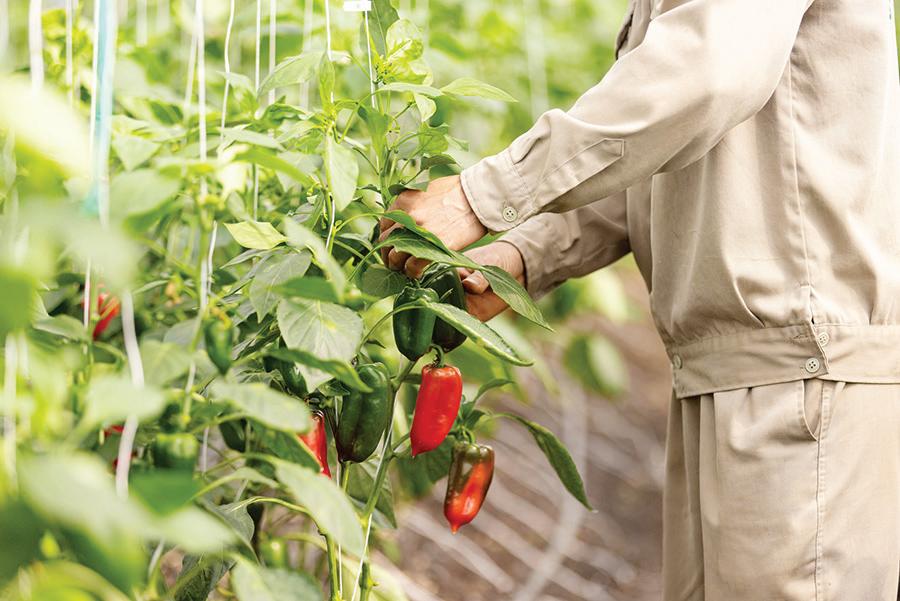
up against the challenges of traditional farming in an era of climate change and unpredictable prices.
"Outdoor vegetable farming was a gamble," Hieu explains. “Sometimes we'd have a great harvest but no market,” for the tomatoes and different cabbage varieties he was growing. “Other times the prices were good, but pests or bad weather would destroy everything."
He knew there had to be a better way. That soon came along in the form of the "Smart Farming for the Future Generation" project being implemented in his town. He spotted the project’s distinctive greenhouses being put up all around and instantly recognised their superiority to the traditional ones he’d seen elsewhere. Hieu lost no time in signing up to join the initiative.
Funded by the Republic of Korea and implemented by the Food and Agriculture Organization of the United Nations (FAO), the initiative supports local farmers and cooperatives in adopting smart farming techniques, particularly through the use of optimised greenhouses. These combine more advanced technology with af-
monitoring temperature and humidity and a drip irrigation system which feeds water through long pipes to individual plants for maximum effect. Multi-layered doors preventing pests and diseases from entering, greatly reducing the need for pesticides, are among the other simple but innovative solutions the initiative has offered.
The project has also provided Hieu with high-quality seedlings and advanced fertilisers for addressing specific nutrient deficiencies. But he says the most valuable asset was the technical training he received on greenhouse cultivation and pest management.
"They taught us everything, from how to use safe pesticides to how to manage the greenhouse environment" by controlling temperature, humidity, light, ventilation, CO₂ levels and irrigation.
This knowledge, combined with his own drive and determination, proved to be a winning combination.
Hieu's first crop of bell and palermo peppers in his 1 836 m2 greenhouse yielded an impressive 18 tons, generating a profit of VND 500 million (nearly USD 20 000)
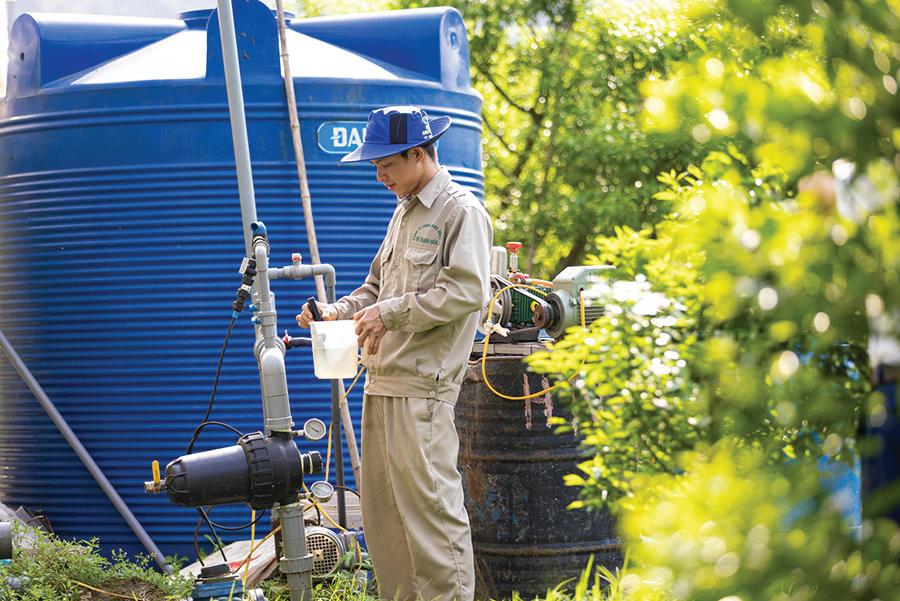
and market access.
greenhouse operations, adding another 2 000 m2 for tomato cultivation. He also established the Tan Lap HighTech Cooperative, bringing together eight households to share knowledge, resources
Hieu and other co-operative members believe that if they stay hungry for new agricultural knowledge, they will maximise the potential of Moc Chau's climate and soil. Beyond producing a large quantity of agricultural products directly for consumers, the co-operative additionally hopes to make sales on e-commerce platforms, as well as venture into experiential agri-tourism.
Hieu has dreams of transforming the entire Tan Lap cooperative into a hub for smart agricultural production. He sees Moc Chau becoming a leading supplier of
high-quality vegetables and fruits, not just for local markets but across the country.
"We want to create a sustainable and profitable agricultural sector," Hieu explains. "One that provides good jobs for young people and improves the lives of everyone in the community."
The project has not only provided Hieu with the tools and knowledge he needed, but also connected him with other farmers and experts, creating a network of support and collaboration. Hieu is now a key figure in the community, sharing his knowledge and inspiring others to embrace smart farming
techniques.
As Hieu and his wife tend their vegetables, the couple’s two young daughters follow their parents around the greenhouse and garden when there is no school, perhaps showing interest for their own future in farming. With the new generations in mind, smart agriculture can attract young people to the sector, creating new opportunities and revitalising rural communities. Tech-savvy and driven, Hieu represents a new wave of farmers, who are shaping the future of agriculture in Viet Nam.
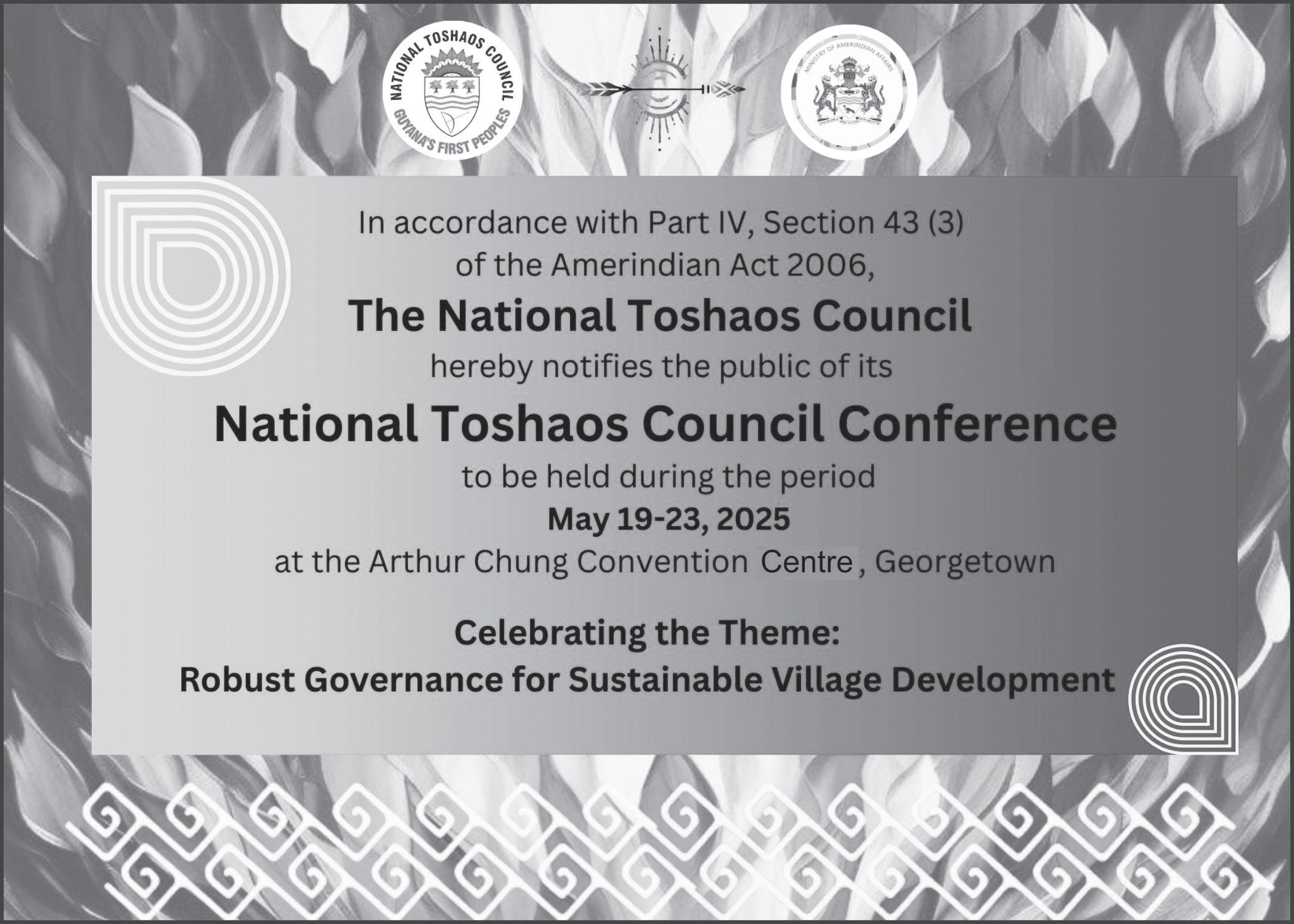
CONTINUING a series of people-centred interventions across the country, Minister of Human Services and Social Security, Dr. Vindhya Persaud, on Friday, spearheaded an outreach to Region Two (Pomeroon-Supenaam).
The initiative, which was highlighted via a series of updates on the ministry’s Facebook page, aims to deliver critical social services directly to the various communities.
Branded under the ongoing theme ‘Bringing the Services to the People’, the outreach marked another significant step in the government’s strategy to make social support systems more accessible and responsive. The minister visited several communities, including Good Hope, Johana Cecilia, Jib, and Charity Scheme, where she engaged with residents, listened to their concerns, and provided firsthand, immediate solutions.
At the Good Hope Transformation Centre, Minister Persaud outlined the wide range of services offered by the Ministry, from Women’s Innovation and Investment Network (WIIN) training programmes to support for the elderly, persons with disabilities, and victims of gender-based violence. With support from the Childcare and Protection Agency (CPA) and the Sexual Offences and Domestic Violence Policy Unit (SO&DVPU), the outreach placed special emphasis on educating residents about two key legislative tools, the Family Violence Act [2024] and the Protection of Children Act [2009].
In Johana Cecilia, the outreach took a more intimate approach, with the minister engaging in deep discussions on the socioeconomic challenges faced by vulnerable groups, particularly the elderly, differently- abled individuals, and families in need of public assistance. Residents received information on opportunities for personal development through WIIN and were urged to take advantage of training that could lead to economic independence.
The outreach also served as a platform to offer tangi-
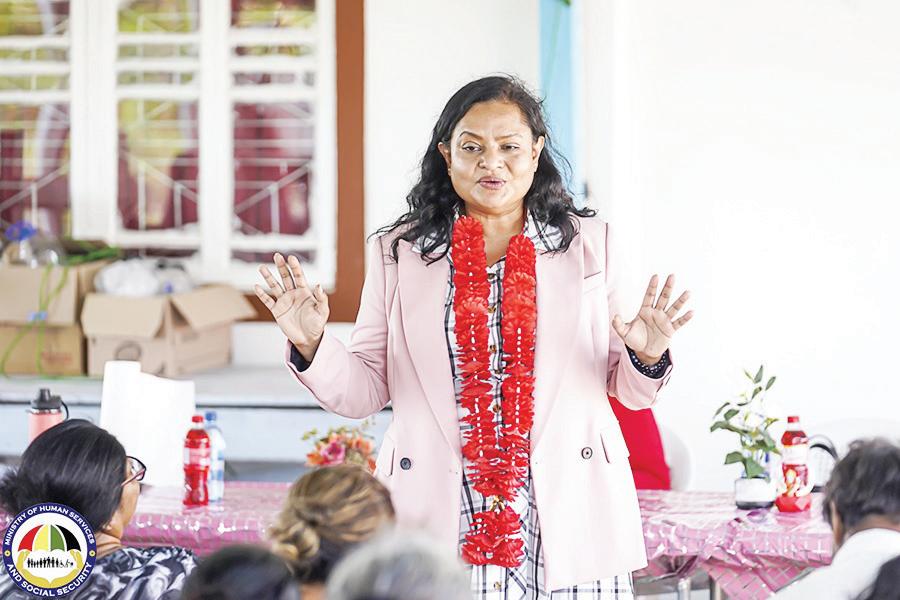
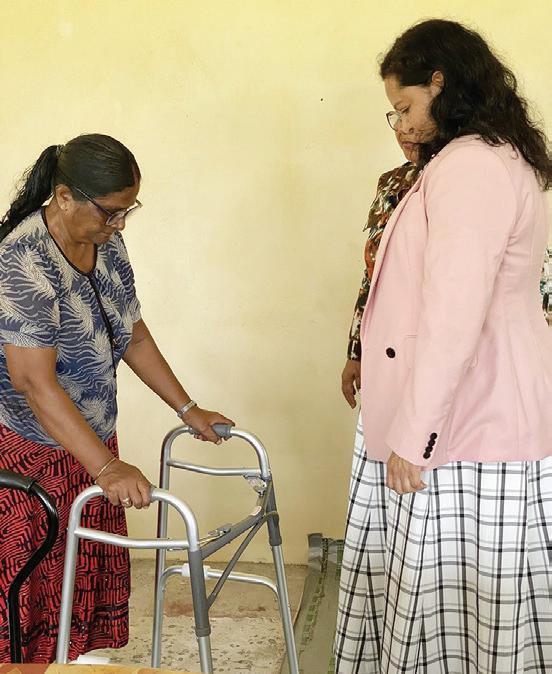
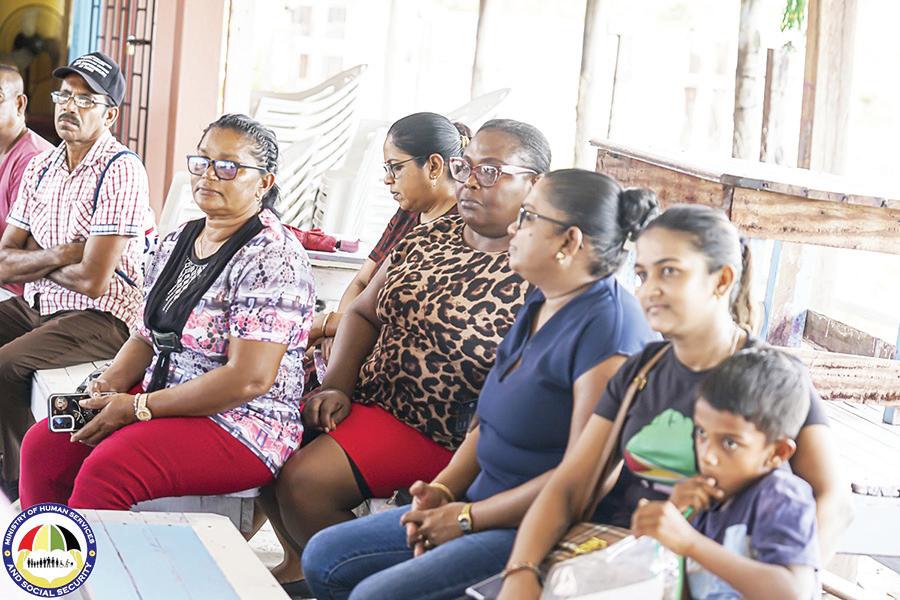
ble aid. Region Two resident, Hemwattie Ramlall, received a mobility walker through the ministry’s Difficult Circumstances Unit, an act that showcased the ministry’s dedication to providing real-time relief to those in immediate need.
Minister Persaud’s visit to the community of Jib further demonstrated the government’s proactive approach to community development. Residents were encouraged to openly discuss their experiences, while the minister and her team answered inquiries and offered guidance on navigating services such as old age pension, public assistance, permanent disability support, and domestic violence intervention.
At the final stop in Charity Scheme, residents were not only heard but had several of their issues resolved on the spot. The minister's commitment to follow up on unresolved matters left many residents feeling hopeful. Perhaps more importantly, the community left the engagement better informed about the legislative protections available to them, arming them with the tools to actively stand against abuse.
Regional Chairwoman, Vilma De Silva, and other regional representatives accompanied the Minister throughout the outreach, adding local leadership to the national-level efforts.
This outreach is part of a broader movement spearheaded by Minister Persaud to decentralise access to social services. Similar initiatives have been conducted across multiple regions, each tailored to meet the unique needs of the communities involved.

By Shaniya Harding
WORK is rapidly advancing on the Soesdyke-Linden Highway, one of Guyana’s busiest and most essential roadways, as contractors employ a focused, section-by-section approach to rehabilitation.
Minister of Public Works, Bishop Juan Edghill, confirmed that the project remains on schedule and that visible progress has already been made on multiple fronts.
“The project is proceeding. Sections that have to be widened have already started. Drains,
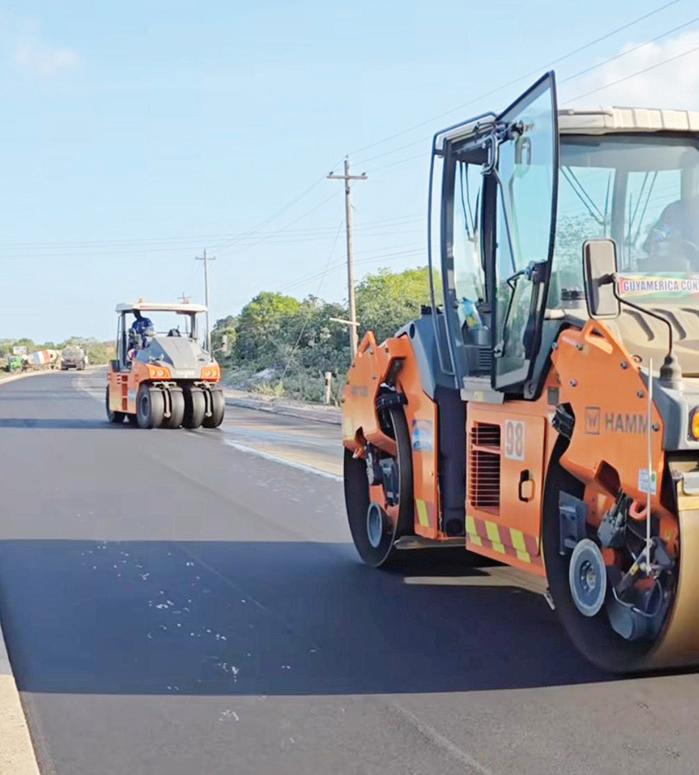
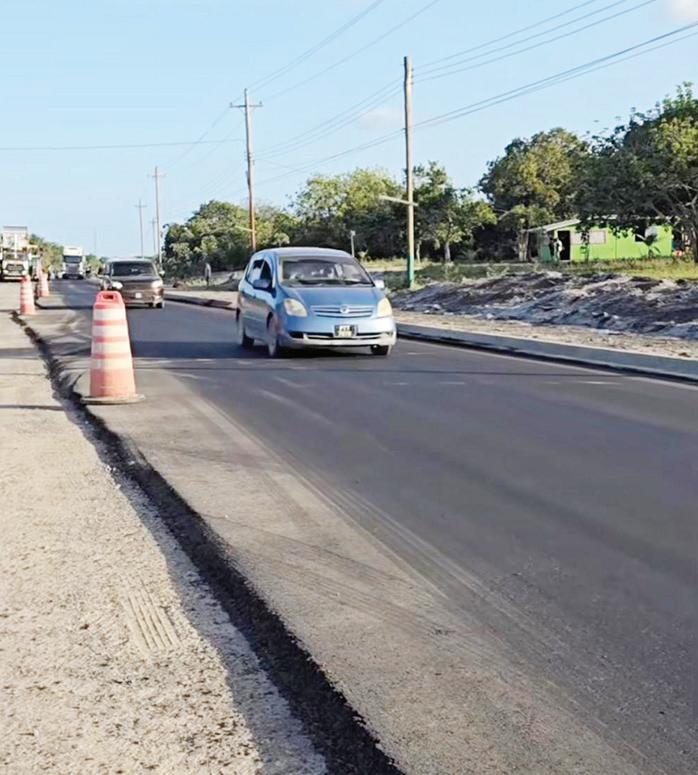
concrete drains at both ends have been installed in some sections, more in the upper end towards Bamia,” the Public Works Minister told the Sunday Chronicle.

As one of the nation’s most pivotal transportation links, contractors are working to ensure each section, once started, is
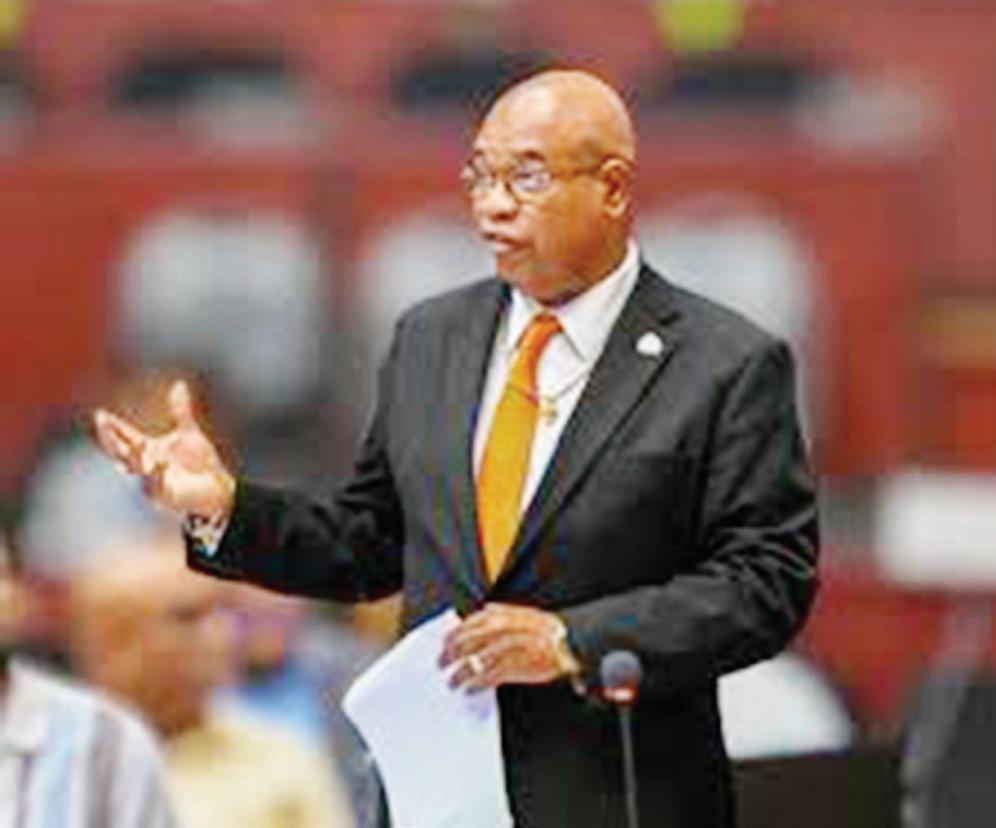
completed promptly to minimise disruption for commuters. Emphasising this approach, Minister Edghill added, “Because of the importance of the carriageway and its use, the contractors are trying to, once we start working on a section, bring it to completion and keep moving along.”
He further noted, “The road has to be milled. There are sections that have been milled out and built up with crusher run and some aspects of paving have already started as well.”
The US$161 million rehabilitation project was officially launched in February 2025, following its award in August 2024 to local firm GuyAmerica Construction Inc. and Trinidad-based Namalco Construction Services Limited. Work began with the removal of the
TURN TO PAGE 18


By Ambassador Yang Yang
I AM deeply honoured to be appointed by H.E. Xi Jinping, President of the People’s Republic of China, as the 17th Ambassador Extraordinary and Plenipotentiary of the People’s Republic of China to the Cooperative Republic of Guyana, and arrived in the “Land of Many Waters” full of natural beauty and tremendous opportunities on 17 April 2025. I would like to avail this opportunity to extend my heartfelt gratitude and best wishes to friends from all walks of life who have long nurtured and supported the development of China-Guyana relations.
China and Guyana are friends sharing weal and woe. Though separated by great distance, our two nations have forged an enduring friendship. In 1853, the first group of Chinese indentured labourers arrived in Guyana and gradually integrated into the local society, becoming one of Guyana's six major ethnic groups. In 1972, Guyana, as the first English-speaking Caribbean country, established diplomatic relations with China. Over the years, China and Guyana have stood together through thick and thin, sharing weal and woe. Our friendship, tested by time and distance, has proven resilient, continuing to thrive with vitality.
Political mutual trust has deepened steadily, and strategic synergy has
grown even closer. In 2023, H.E. President Mohamed Irfaan Ali paid an official visit to China, and President Xi Jinping held an in-depth meeting with President Ali and reached an important consensus on bilateral relations and matters of mutual concern, charting a new blueprint for the future development of China-Guyana relations. I stand ready to work closely with the Guyanese side to earnestly implement the important consensus reached by the two heads of state, to share opportunities, confront challenges, pursue cooperation, promote development together, and build jointly an even closer China-Guyana community with a shared future. China and Guyana are partners cooperating closely. At present, practical cooperation between our two nations has entered the fast track, and projects under the auspices of the Belt and Road Initiative have delivered fruitful outcomes. In 2024, bilateral trade between China and Guyana reached US$1.4 billion, up 14.3% yearon-year and nearly four times higher than in 2019. China’s direct investment in Guyana also surged from US$256 million in 2019 to US$10.6 billion in 2024, representing a fortyfold increase. Signature projects, including the New Demerara River Bridge, six Regional Hospitals, and the China-aided China-Guyana Friendship Joe Vieira Park, will become iconic landmarks of the ever-growing China-Guyana friendship.
Chinese enterprises have fulfilled social responsibilities by creating nearly 5,000 jobs for the local community and actively participating in public welfare activities, such as poverty alleviation, educational assistance, and charitable donations.
With enormous potential in China-Guyana economic and trade cooperation, we will encourage more qualified, reputable, and competent enterprises to invest in Guyana and take an active part in the country’s modernisation process, promoting the high-quality upgrade of practical cooperation between our two nations.
China and Guyana are brothers bound by deep affection. Amity between the people holds the key to sound state-to-state relations. Since the establishment of diplomatic relations, people-to-people and cultural exchanges between China and Guyana have grown closer and more dynamic. The Chinese government has dispatched 20 me dical teams to Guyana since 1993, providing healthcare to over 1,310,000 patients, treating more than 30,000 critically ill cases, and performing over 70,000 surgeries. The Confucius Institute at the University of Guyana has played a vital role in cultivating local Chinese language talents and advancing China-Guyana cultural exchanges since its establishment in 2014.
Meanwhile, numerous Guyanese officials, doctors, entrepreneurs, journalists, policemen, and engineers have un-

dertaken professional and technical training in China, emerging as key participants, beneficiaries, and promoters of China-Guyana people-to-people exchanges. Just as President Ali pointed out, China and Guyana are more than friends—we are family members. With the joint efforts of both sides, the Chinese Dragon and the Guyanese Jaguar are forging closer ties.
Guyana is a crucial member of both CARICOM and CELAC. China has always been firmly supporting Latin American and Caribbean countries, in pursuing development paths tailored to their national conditions, firmly supporting the sovereignty, independence, and territorial integrity of all nations, firmly supporting the integration of Latin America and Caribbean countries, firmly supporting Guyana and other
countries in the region to play an even bigger role in international affairs.
This year marks the 10th anniversary of the official launch of the China-CELAC Forum. The Fourth Ministerial Meeting of the China-CELAC Forum will be convened soon. An increasing number of Latin American and Caribbean countries have spoken highly of the Global Development Initiative, Global Security Initiative and Global Civilization Initiative proposed by President Xi Jinping, and look forward to China exerting greater leadership on the international stage. China and Latin America have established the new five-sphere framework of cooperation characterised by mutual trust in the political sphere, winwin cooperation in the economic sphere, mutual learning and exchange in the cultural sphere, close coordination in interna-
tional affairs, and strong synergy between overall cooperation and bilateral relations. High-quality Belt and Road cooperation between China and Latin America continues to deepen and deliver tangible results. Cooperation is expanding in scope, upgrading in structure, gaining more momentum, and improving in quality.
In 2024, China–Latin America trade exceeded US$500 billion for the first time, a fortyfold increase compared with the year 2000. Taking the 10th anniversary of the China-CELAC Forum as a new starting point, both sides will jointly plan for development and stand together in the face of challenges, amplifying the united voice of the Global South for solidarity and resilience and bringing stability and energy to the turbulent world. Unilateralism and protectionism lead nowhere; multilateralism and win-win cooperation offer the only way forward.
China stands ready to work hand in hand with Guyana to seize new opportunities for common development, usher in a new chapter in bilateral relations, and better serve our two nations and peoples. At the same time, China and Latin America, as part of the Global South, will unite and cooperate to make greater contributions to global peace, security , prosperity, and advancement.
By Feona Morrison
IN a landmark ruling delivered on May 9, 2025, Justice Nareshwar Harnanan ordered the defendant, petroleum importer, SOL Guyana Incorporated, to pay the claimant, the Guyana Revenue Au-
siderable concession from the standard 50 per cent.
However, after an internal audit, the GRA discovered that only 147,950,610 litres of the fuel were actually delivered to ExxonMobil, leaving a shortfall of 54,878,817 litres.
As a result, the GRA
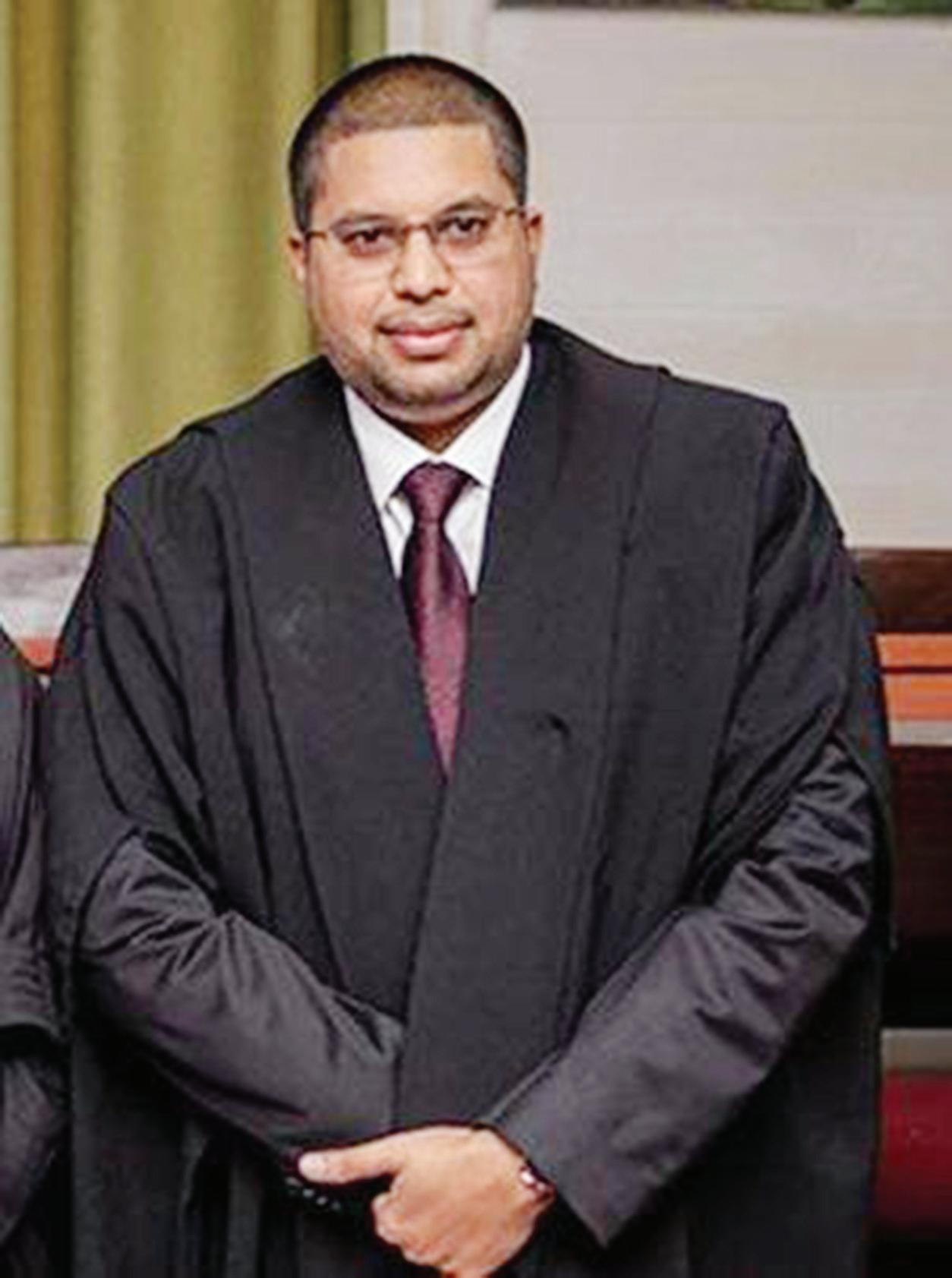
thority (GRA), more than $2.1 billion in excise taxes.
In a 14-page judgement rendered at the High Court in Demerara, the judge found that SOL improperly retained a significant portion of tax-exempt fuel intended for Esso Exploration and Production Guyana Limited (now ExxonMobil Guyana Limited).
The case centred on a consignment of 202,829,427 litres of fuel imported in 2020 by SOL Guyana under a tax exemption arrangement established in a Production Sharing Agreement (PSA) between ExxonMobil Guyana and the Government of Guyana.
The agreement allowed ExxonMobil to benefit from a 10 per cent excise tax rate on fuel imports used in petroleum operations—a con-

In response, SOL denied any wrongdoing, arguing that they had paid all applicable taxes and operated under a system that allowed for retroactive tax exemptions based on subsequent verification. The company further claimed that administrative delays and software transitions within the GRA created confusion, leading them to believe that they could recover taxes on fuel

delivered in 2019 through the 2020 exemption letters.
Justice Harnanan dismissed those ‘defences’, holding that SOL was never a beneficiary of the PSA tax exemptions but was instead merely an authorised importer acting on ExxonMobil’s behalf.
“While they [SOL Guyana Incorporated] may have encountered legitimate administrative uncertainty,
it does not follow that it was lawfully entitled to unilaterally retain a portion of tax-exempt fuel under the guise of a self-directed ‘recoupment’ mechanism,” the judge held.
The court was particularly persuaded by documentary evidence, including a February 22, 2021 letter from SOL and a certified reconciliation report submitted by ExxonoMobil

Guyana’s Logistics Manager, which confirmed the 147,950,610-litre delivery.
Justice Harnanan ruled that SOL’s failure to deliver the remaining 54,878,817 litres of fuel meant it could not claim a tax exemption on that quantity.
He said: “As previously established, the defendant’s ability to benefit from tax exemptions derived solely
TURN TO PAGE 20
assessed that the exempted fuel, which was not delivered to the rightful beneficiary, no longer qualified for the tax break and demanded payment of the full excise tax, totalling $2,196,908,802.
The GRA argued that while SOL Guyana was authorised to import the tax-exempt fuel on behalf of ExxonMobil, it had no independent entitlement to the exemption and was obligated to deliver the entire consignment to the designated beneficiary. Failure to do so, the GRA said, voided the exemption for the undelivered portion.
Despite multiple notices, the GRA said SOL failed to remit the excise tax owed on the retained fuel, prompting the lawsuit.
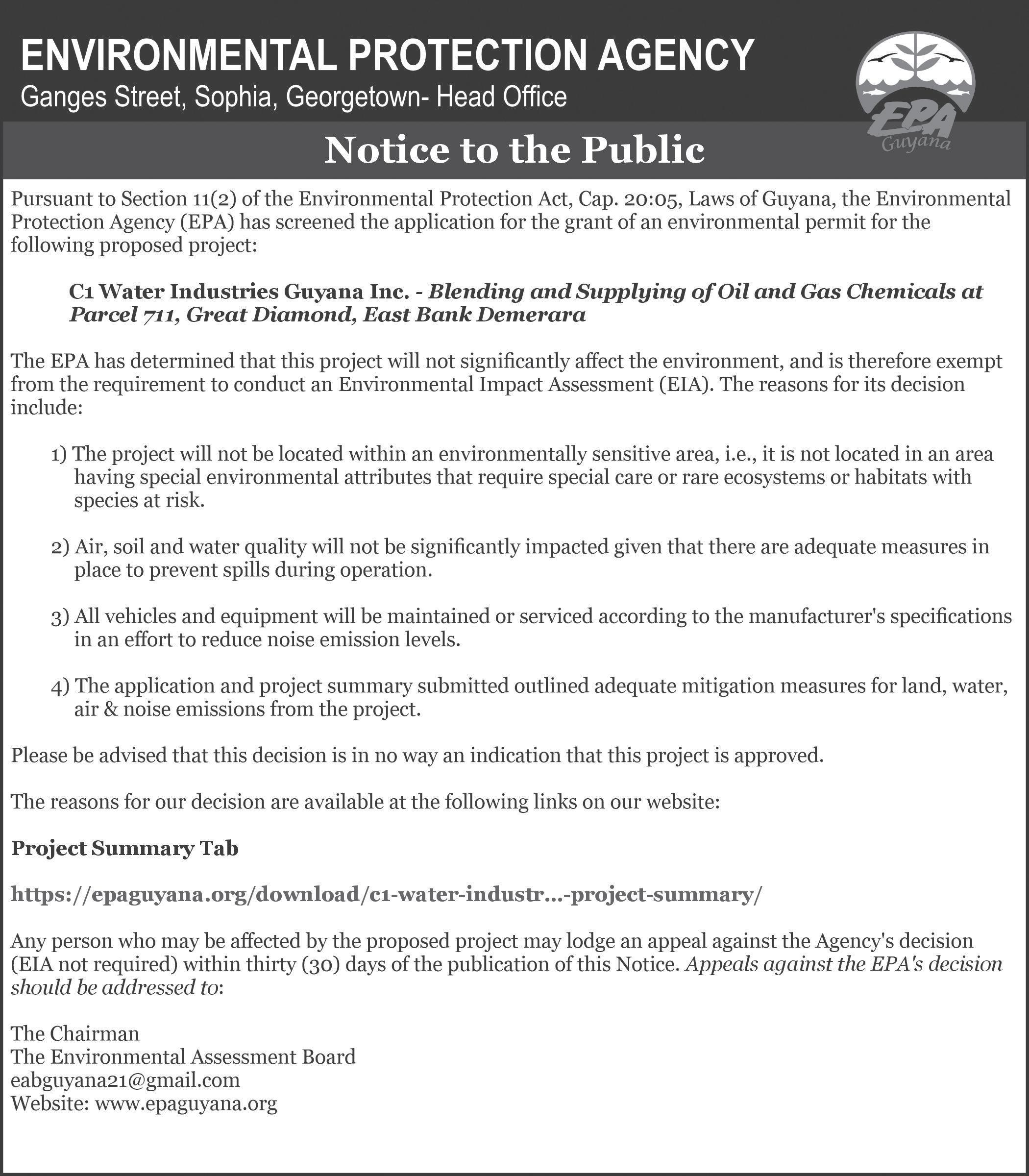
THE police in Region Six (East Berbice-Corentyne) are investigating an incident involving the Orealla/Siparuta River Ambulance which occurred in the Corentyne River near Orealla Village, Corentyne Berbice, resulting in the death of the captain and injuries to a nurse.
The incident reportedly took place sometime between 01:00 hrs and
11:30 hrs on Saturday.
According to preliminary information, the river ambulance was being operated by 65-yearold Lewis Deveire, also known as ‘Shiko,’ a resident of Orealla village.
Deveire, who served as the ambulance captain under the Ministry of Health, died in the incident. Also on board was 29-yearold Shunika Williams, a female nurse attached to
the Orealla Health Centre, who survived the mishap. Williams, who also hails from Orealla, sustained injuries to her body.
Details surrounding the circumstances of the incident remain unclear at this time, and authorities have not yet confirmed what led to the mishap.
However, the Sunday Chronicle was reliably informed that the duo had brought out a child from
the area to the Skeldon Public Hospital and were returning home when the mishap happened.
Community members have expressed shock and sorrow following news of the incident, especially given the vital role the river ambulance plays in medical transportation for the remote riverine communities of Orealla and Siparuta.


FROM PAGE 19
from the express authorisation of the claimant.”
In the absence of such authorisation, the judge added that any retention of fuel imported under exemption letters – ostensibly on the basis of an informal or retrospective reconciliation process- was most improper and impermissible.
“The defendant’s accounts amounted to an improper and unauthorised retention of tax-exempt fuel,” the judge stated. The High Court judge further emphasised that SOL’s entitlement to reduced tax rates depended solely on express authorisation from the GRA, which was conditional upon full delivery of the imported fuel to ExxonMobil.
The judge rejected SOL’s late-stage argument that it held a “legitimate expectation” of continuing tax relief due to the GRA’s previous conduct.
The judge said that SOL claimed this expectation was violated when GRA stopped the practice during its transition to a new customs software system in
2019.
Justice Harnanan, however, concluded that this contention was not pleaded or supported by evidence and could not be raised for the first time in written submissions.
Additionally, the court rejected SOL’s counterclaim seeking a refund of $278,341,888 in allegedly overpaid taxes, stressing that it was “based on the erroneous belief of an entitlement to the tax exemption.”
In the ruling, Justice Harnanan ordered SOL Guyana to pay GRA the full excise tax of $2,196,908,802 along with interest at six per cent per annum from the date of filing of the lawsuit to the date of judgement, and four per cent thereafter until the sum is fully paid.
SOL was also ordered to pay $3 million in fixed costs by July 31, 2025. Attorney-at-Law, Jason Moore, the in-house counsel for the GRA, appeared on behalf of the agency, while attorneys Nigel Hughes and Stephen Roberts represented SOL Guyana.
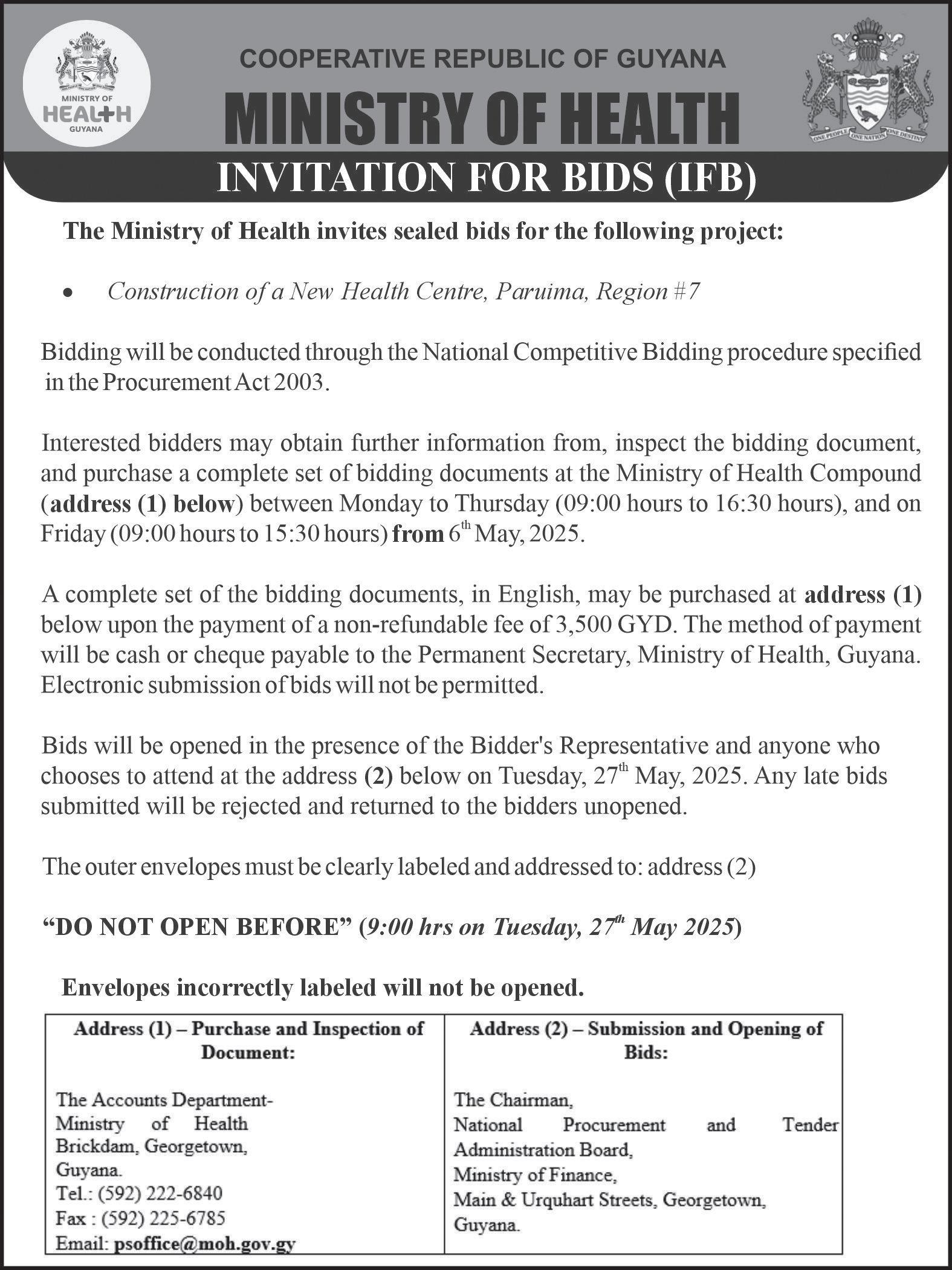


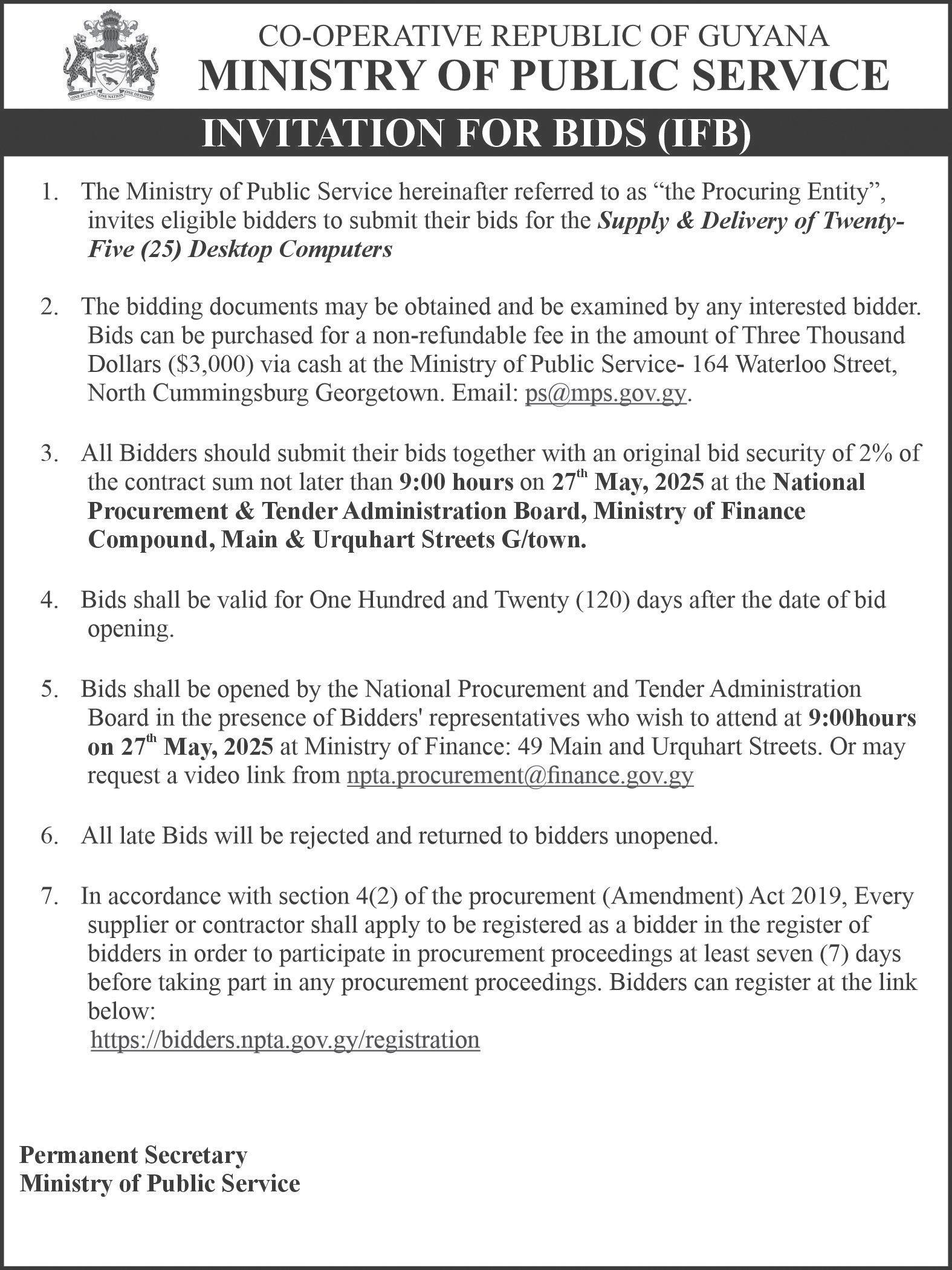

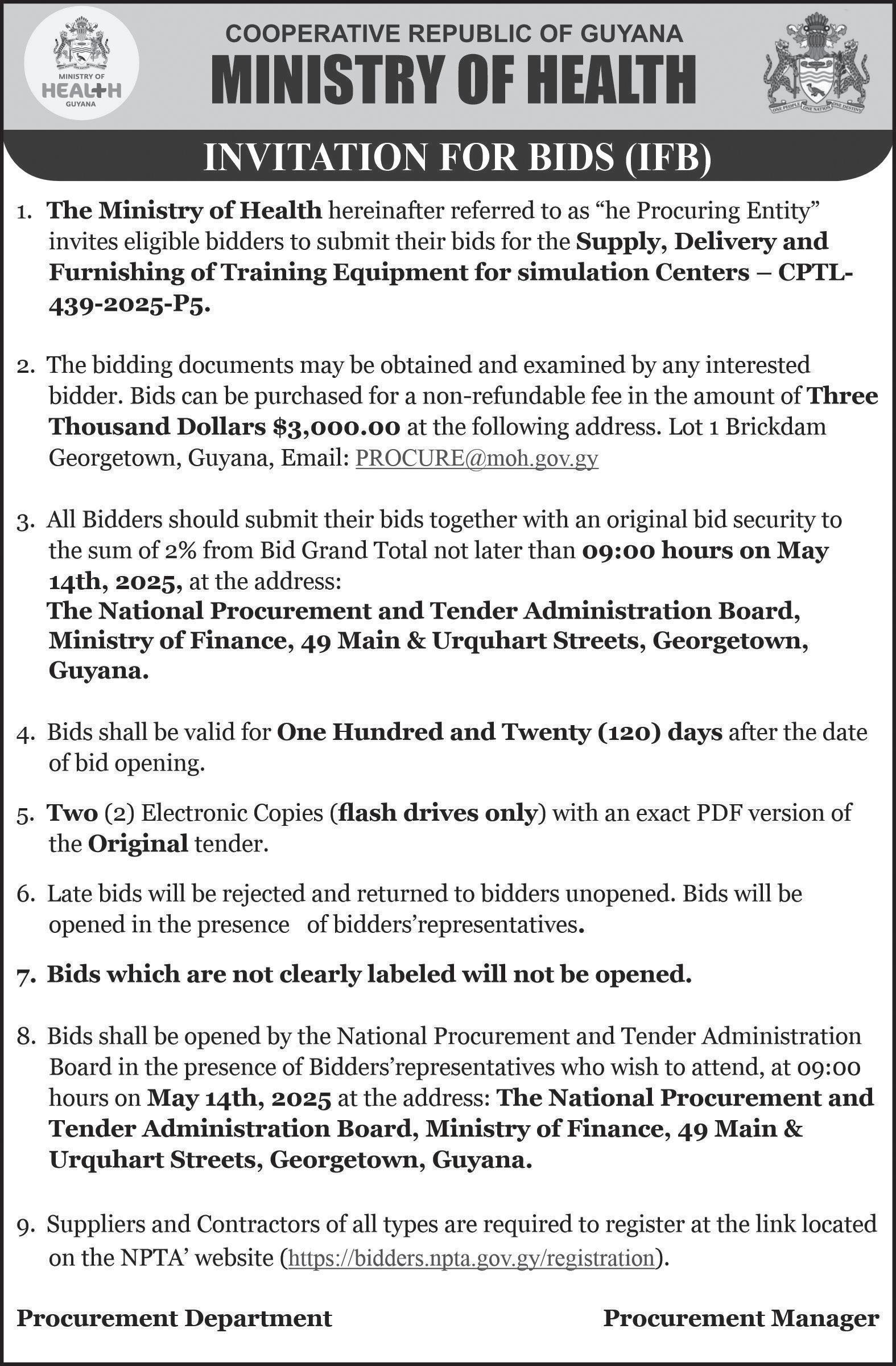

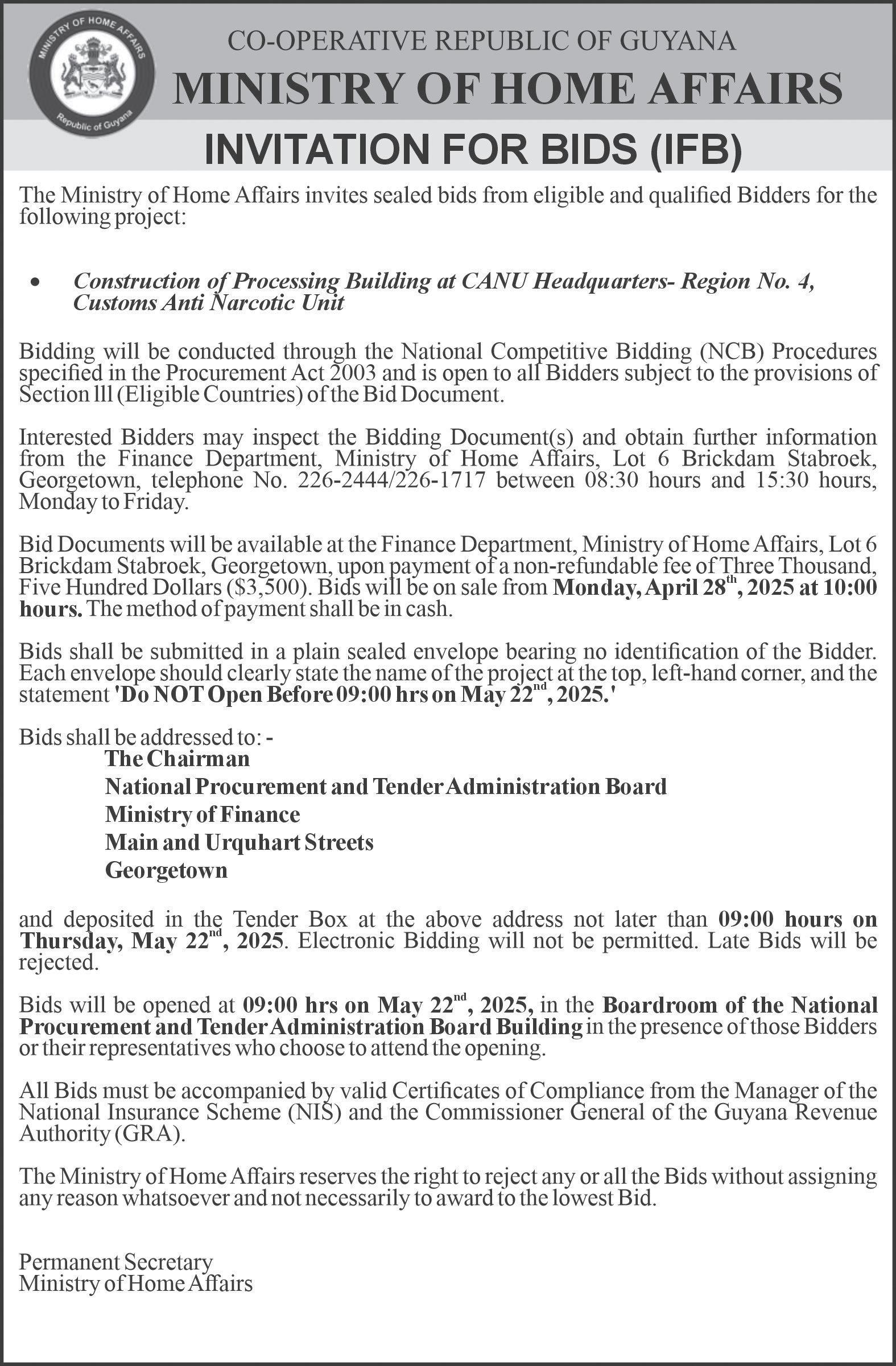



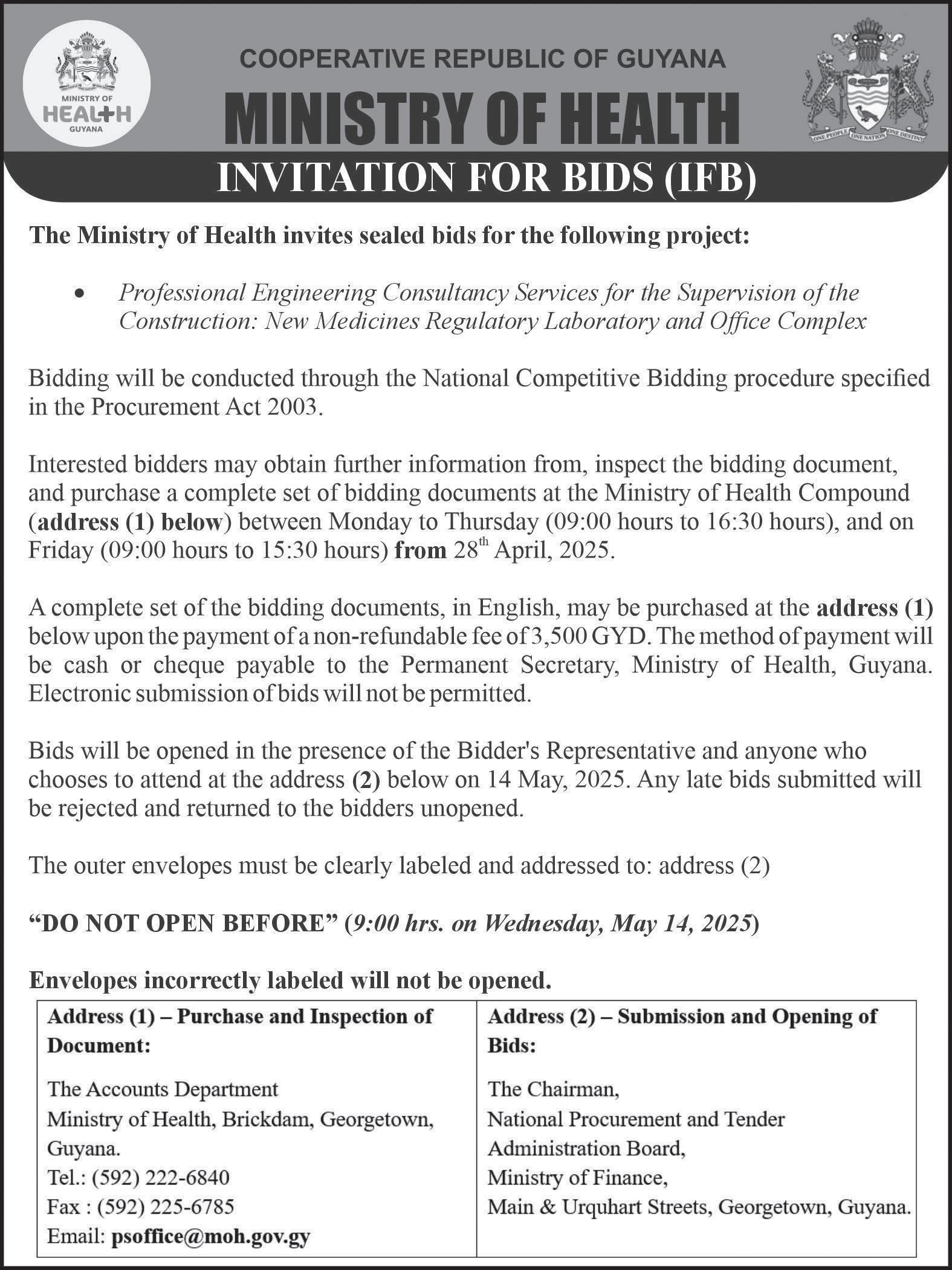

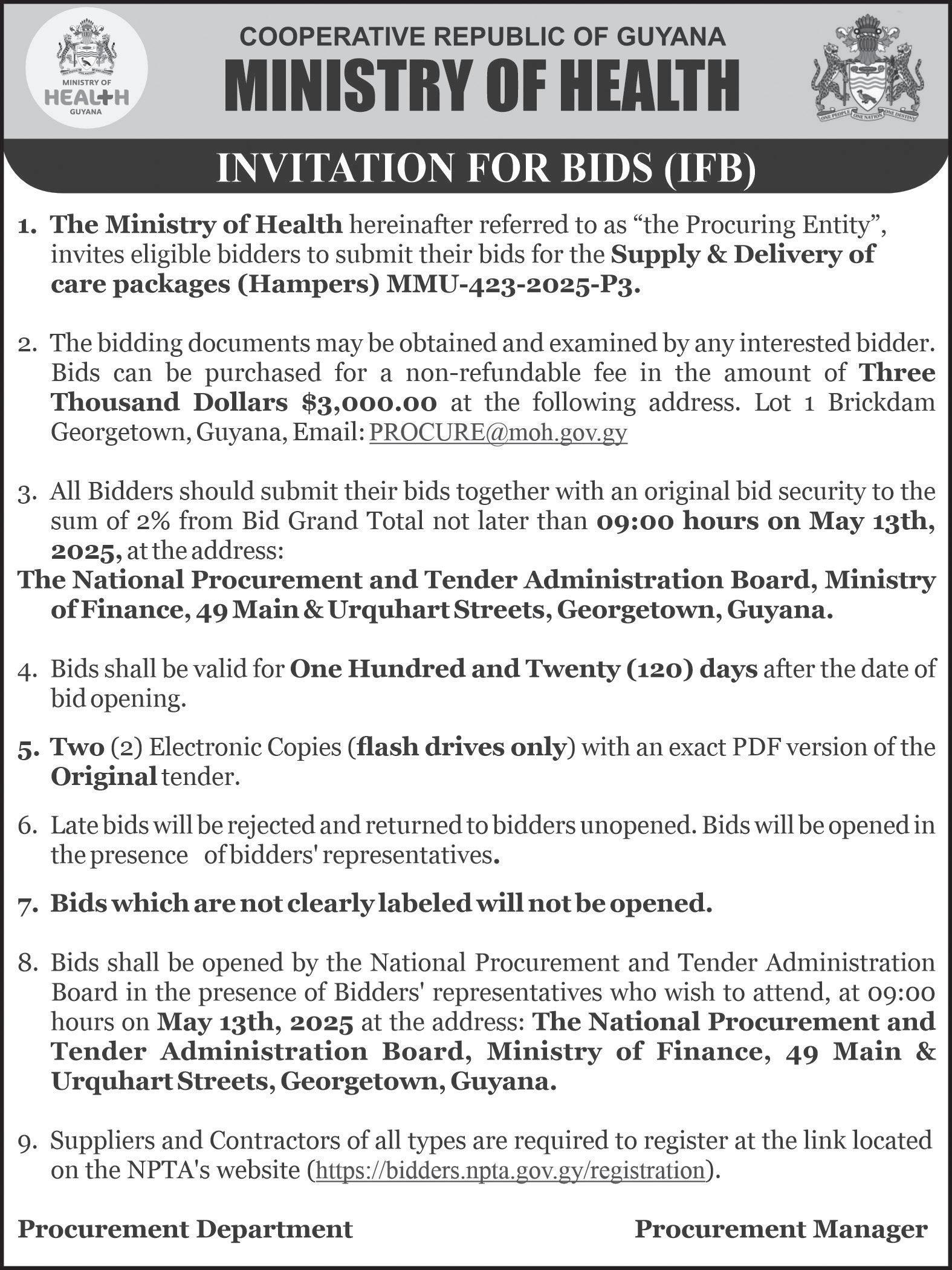
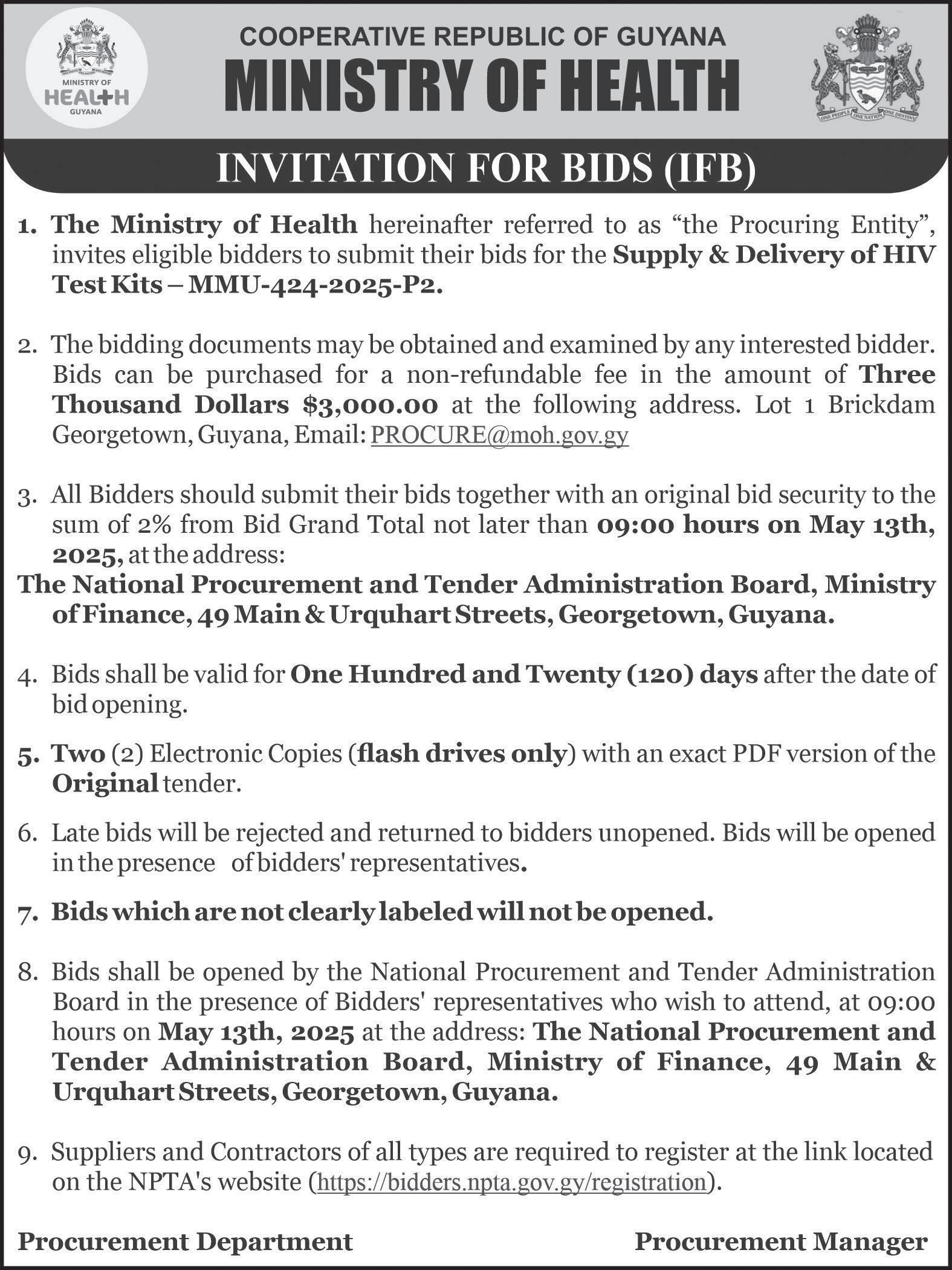
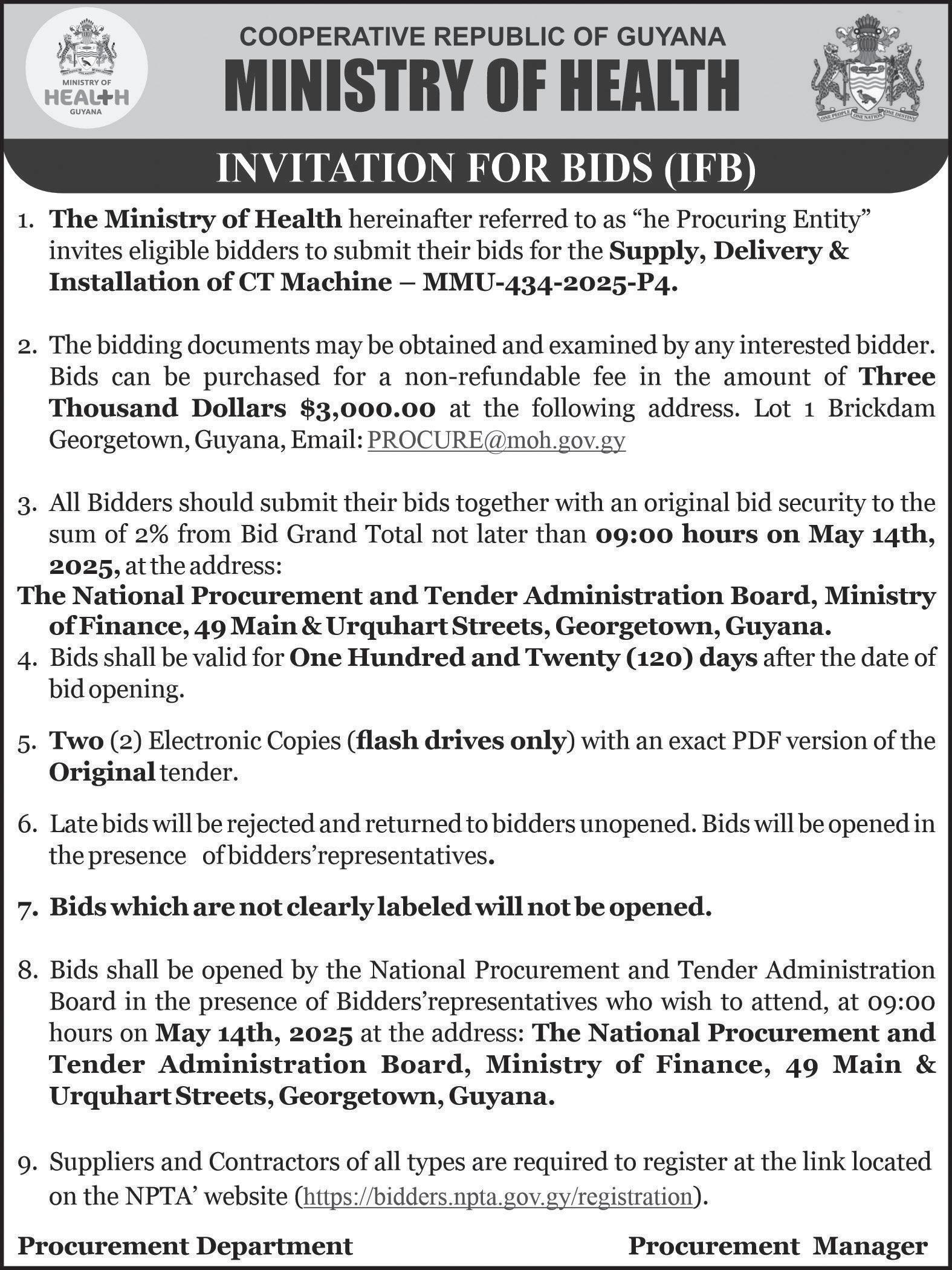


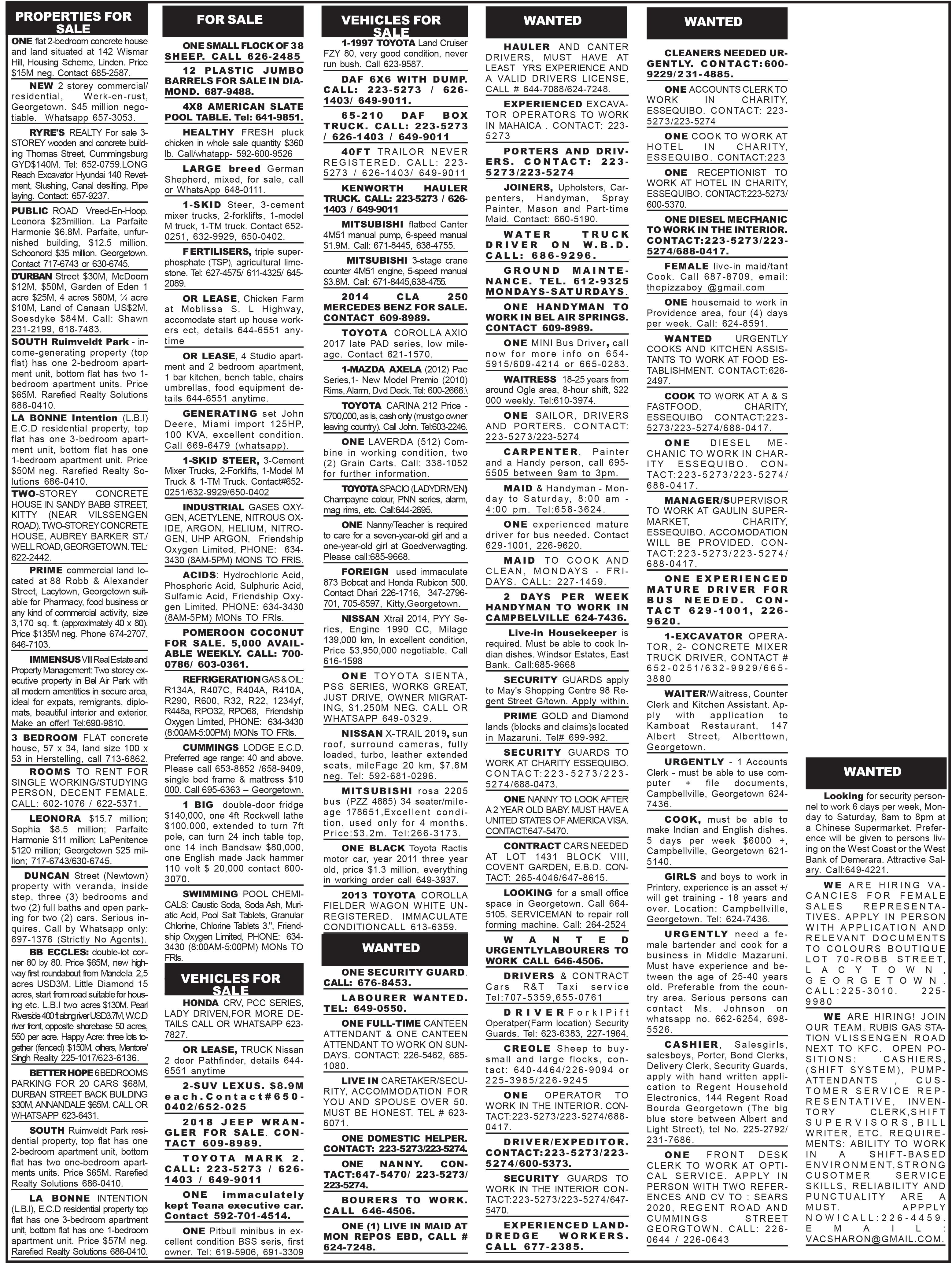
RACING TIPS
ON Tuesday evening last, there was a gathering of the who's who of Indian cricket at the Board of Control for Cricket in India (BCCI) office.
BCCI president Roger Binny, Secretary Devajit Saikia, and GM Abey Kuruvilla were among those present for the inauguration of the newly dedicated Sachin Tendulkar Room and Sunil Gavaskar Room. Both legends - Gavaskar and Tendulkar - were in attendance for the occasion.
The national selectors, including chairman Ajit Agarkar, were present. Rohit Sharma, however, was not there. The fact that Mumbai Indians were playing a match in the evening explains Rohit's absence. But strangely enough, Rohit announced his retirement from Test cricket a day later, catching everyone by surprise, including BCCI officials and his Mum-
bai Indians teammates.
Rohit is believed to have sent an email to the top brass of the BCCI on Wednesday evening. Around the time his social media post announcing the retirement appeared, chief selector Ajit Agarkar was seen speaking on the phone at the Cricket Club of India (CCI). Whether it was a conversation with Rohit remains speculative, but it is understood that the selectors had no inkling of Rohit's decision.
The decision has put to rest speculation over his availability, or otherwise, for the five-Test series in England in June-July. But it has raised questions about the reason for the sudden move.
There are suggestions, even reports, that the selectors were not keen to retain Rohit as captain for the England series.
Although the selectors are believed to have dis -
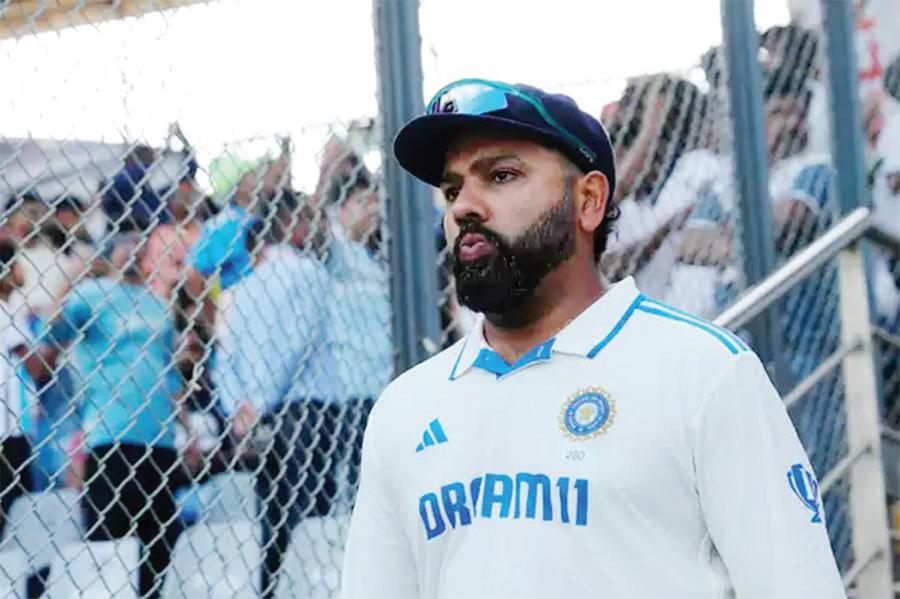
cussed the England series on Tuesday, it is not known if they deliberated on the captaincy at all. It is understood that a decision on Rohit would have been taken a week ahead of the Test squad selection, which is expected to be around the time of the IPL play-offs. (The India A squad, consisting of players who are out of contention for
the IPL play-offs, is expected to be announced around May 15).
Cricbuzz had earlier reported that Rohit would decide his Test future based on the outcome of his IPL season. While he did play a couple of brilliant innings, his overall performance did not exactly ignite the tournament. In 11 matches, he
scored 300 runs at an average of 30, numbers he wouldn't be too proud of.
Whether it was a personal decision to retire or due to an external nudge will remain unknown. It may be recalled that not too long ago, the contracts of a few members of the Indian team's support staff, believed to be close to Rohit, were not renewed. Days later, he openly praised one of them.
Rohit, though, will continue playing in the ODIs, something he reiterated in the social media post. He will, of course, lead the ODI side. As earlier reported by this website, he will collaborate with close friend Abhishek Nayar on his batting and fitness and is expected to continue till the 2027 World Cup.
GILL FAVOURITE TO SUCCEED ROHIT
With Rohit out of the
race, the selectors may pick Shubman Gill for the Test captaincy. Gill has been lauded for the way he has been leading Gujarat Titans this season, and it may have caught the attention of the selectors.
"He's captaining the side really well. One can feel his presence in the dressing room. That's what you look at in a leader. And he's been very good with the youngsters as well. He's passing on his knowledge and spending a lot of time with them.
On the ground, he's very proactive. He understands the game sense. It is good to see someone like Shubman getting those runs and also captaining the side really well," GT assistant coach Parthiv Patel said of Gill the leader and the batter after the MIGT game on Tuesday night. (Cricbuzz)
THE Denver Nuggets pulled away in overtime to take a 2-1 lead in the best-of-seven NBA playoff semi-final against the Oklahoma City Thunder.
The Thunder are the top seed in the Western Conference and were narrowly in front for most of the contest before hosts Denver claimed a 113104 win.
There were no more than three points between the teams throughout the fourth quarter until the Thunder edged into a 102-99 lead inside the final two minutes.
Aaron Gordon's three-pointer with 27 seconds remaining took the game into overtime, when the Nuggets' experience told as the 2023 champions went on an 11-2 run in the additional five minutes.

Jamal Murray led fourth seed Denver with 27 points while Gordon added 22 and Michael Porter Jr 21.
"They tested us all night but it was a good team win," said Murray.
"We've been together for years so we knew what we had. We believe in each other and we're going to need more of it."
Three-time MVP Nikola Jokic missed 17 of
his 25 shots for Denverwho also host game four today - but claimed 20 points and 16 rebounds.
Thunder's Shai Gilgeous-Alexander, the favourite for this season's MVP award, missed 15 of 22 to finish with 18 points, while Jalen Williams led Oklahoma City with 32.
Top seed Cleveland pull a game back In the Eastern Con -
ference semi-finals, the Cleveland Cavaliers' best-of-seven series with the Indiana Pacers is also 2-1 after the Cavs pulled a game back.
After losing the first two games at home, top seed Cleveland bounced back with Donovan Mitchell scoring 43 points in a 126-104 win in Indianapolis.
The Cavs outscored Indiana 34-13 in the second quarter to open up a 66-45 lead at half-time, and they stayed clear to give themselves a chance to tie the series in Indianapolis on Sunday.
Max Strus added 20 points for Cleveland while Jarrett Allen claimed 19 points and 12 rebounds.
Reigning Defensive Player of the Year Evan Mobley added 18 points and 13 rebounds after
an ankle problem.
"Down 2-0, it's kind of now or never," said Cavs coach Kenny Atkinson. "They showed a lot of fortitude."
Indiana's Bennedict Mathurin scored 23 points off the bench while Pascal Siakam added 18.
Pacers key man Tyrese Haliburton was limited to just four points as he was two-of-eight shooting.
"Haliburton had a rough game," said Rick Carlisle, coach of the fourth-seeded Pacers.
"I have to do more to get him in better positions to have better shots. (BBC Sport)
Virat Kohli has communicated his desire to retire from Test cricket to the BCCI ahead of the big five-match series in England starting June 20, for which he is expected to be a part of the squad.
ESPNcricinfo understands that Kohli has been having these conversations with officials of the BCCI for the past month or so.
If Kohli doesn’t change his mind, he will bring the curtain down on a glorious career that has spanned 14 years and included 123 Tests – 68 of them as captain – in which he has 9230 runs at an average of 46.85. But it hasn’t been a particularly fruitful time
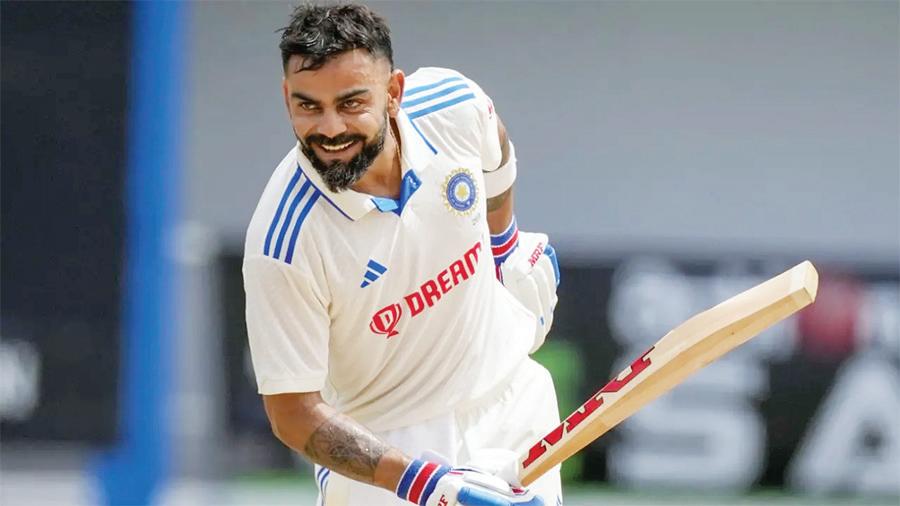
in the format for Kohli of late. When he scored 100 not out in the Perth Test in November 2024, it was his first century in Tests since July 2023 (against West Indies in Port of Spain), and his average, 55.10 at its peak after he scored his career best of 254 not out vs South Africa in Pune in 2019, has
been 32.56 over the last 24 months.
Despite that, it’s understood that the team management and selectors expect his experience to be crucial on the tour, where India will also be playing under a new captain – Shubman Gill is the frontrunner to take over from Rohit Sharma
…Franchises are working to get their overseas players to return to India, most of whom left the country on Saturday
THE BCCI has begun taking steps towards resuming IPL 2025 in May following the announcement of a ceasefire between India and Pakistan that came into effect at 1130 GMT (1700 IST and 1630 PKT) on Saturday.
ESPNcricinfo has learned that all ten franchises are trying to recall overseas players and coaching staff back to India as plans are afoot to restart the tournament as soon as possible. It is understood the IPL could start as soon as the following weekend - around May 15 - subject to India’s government’s permission.
The BCCI had to suspend the tournament for a week on Friday following the escalation of cross-border tensions between India and Pakistan that led to the abandonment of the match between Punjab Kings and Delhi Capitals midway through the first innings in Dharamsala on May 8.
following his retirement from Test cricket earlier this week.
Kohli, as well as Rohit, were included in the highest category (A+) in the latest BCCI contracts, which is usually meant for players who play all three international formats. Both Kohli and Rohit had retired from T20Is after India won the World Cup last year and, if Kohli does retire from Tests, they will only be available for ODI cricket going forward.
Apart from Rohit, India are without R Ashwin, who retired from international cricket during the 2024-25 series in Australia.
With Cheteshwar Pujara and Ajinkya Rahane not in the mix at the moment, and Mohammed Shami’s form under scru-
tiny after his return from a long injury layoff, Kohli is among the only seniors around, along with KL Rahul, Ravindra Jadeja and Jasprit Bumrah.
Before Rohit replaced Kohli as India’s Test captain, India had won 40 of the 68 games in which Kohli led, losing just 17.
The 40 wins makes Kohli India’s most successful Test captain of all time – MS Dhoni with 27 from 60 and Sourav Ganguly with 21 from 49 rank below him – and also places him at No. 4 on the overall list of captains with the most Test wins, behind Graeme Smith (53 from 109), Ricky Ponting (48 from 77) and Steve Waugh (41 from 57).
That it came after he had scored just 134 runs in ten innings on the previous tour, in 2014, made the performance that much more special. That year, 2018, was also his best in terms of aggregate for a year, when he scored 1322 runs.
During his golden run, he averaged 75.93 in 2016, 75.64 in 2017, 55.08 in 2018, and 68.00 in 2019.
During that period between 2016 and 2018, Kohli scored 3596 runs in 35 Tests at an average of 66.59, with 14 hundreds and eight fifties in 58 innings. (ESPNcricinfo)
It was in England that Kohli had recorded one of his greatest highs as a Test batter, on the 2018 tour. He was the top run-getter across the two sides in the five Tests, aggregating 583 at an average of 59.30 with two centuries.
Several franchises have reached out to players and staff asking them to be ready to fly back to India. Some players and support staff who are in transit have been asked to halt further travel for the time being. One of the franchises even asked its coaching staff to postpone travel out of India as they were getting ready to depart on Sunday.
Some teams are more fortunate than others in this regard: only two Gujarat Titans overseas players - Jos Buttler and Gerald Coetzeehave left the country and the franchise is trying to bring them back.
While the franchises remained optimistic earlier on Saturday that most overseas players would return if the tournament were to resume in May, they acknowledged there would be no guarantees if the season extended beyond May 25, when the IPL
The immediate challenge for the franchises is to try and bring back their overseas contingent, most of whom left India between Friday and Saturday.
2025 final was scheduled to be played in Kolkata. That's because of bilateral commitments for several players, as well as the World Test Championship (WTC) final between Australia and South Africa, starting on June 11 at Lord's.
A total of 57 matches had been completed in IPL 2025, and the 58th was going on May 8 between PBKS and DC in Dharamsala when it was called off after 10.1 overs of play. The IPL has not yet taken a call on whether that match will be replayed.
There are 12 league matches and four playoffs remaining in the season, and one possibility is that these fixtures could be played in three southern cities: Bengaluru, Chennai and Hyderabad. Seven teams remain in the race for the playoffs, with only Chennai Super Kings (CSK), Sunrisers Hyderabad (SRH) and Rajasthan Royals (RR) out of contention.(ESPN Cricinfo)
HARRY Kane scored as newly crowned Bundesliga champions Bayern Munich beat Borussia Monchengladbach in Thomas Muller's last home game for the club.
With 31 minutes played, Michael Olise cut inside before aiming a shot towards the top corner that was headed in by Kane for his 25th Bundesliga goal of the season.
French winger Olise completed the victory in the 90th minute with a clever flicked finish into the bottom corner from Leroy Sane's pass.
Kane was restored to the starting line-up after serving a one-match suspension and proved his worth as he has done consistently throughout the campaign that saw Bayern reclaim the title.
Manuel Neuer, returning in goal for Bayern after two months out with a calf problem, got down quickly to push a low shot from Robin Hack around the post as

Harry Kane, who has scored 61 goals in two Bundesliga seasons so far, celebrated lifting his first career trophy
Gladbach went in search of a first-half equaliser.
Bayern pushed forward and Kingsley Coman rose highest in the box but could only head wide, while Sane's low shot was saved.
Neuer made another great save to deny Tomas Cvancara when he was sent clear through on goal.
Muller started on his 750th appearance for Bayern before his summer departure and was honoured pre-match.
The German forward, 35, was unable to mark the milestone with a goal, despite three promising attempts and left the field to huge applause from fans in the Allianz Arena - as well as a guard of honour from his team-mates - in the 84th minute.
Vincent Kompany's side complete their season next Saturday (14:30 BST) away at Hoffenheim. (BBC Sport)
FORMER Berbice, Guyana and West Indies wicket-keeper Milton Robert Pydanna’s funeral in Guyana will be held tomorrow at the Central Assembly of God Church on Church and East Streets. Viewing will be from 13.00hrs to 14.00hrs.
The funeral service will be from 2 pm. Pydanna was born on January 27, 1950 and played in three One Day Internationals (ODIs) for the West Indies.
The Berbician who played locally for the GDF and Police Clubs, died in New York at the age of 75.
He leaves to mourn his wife Kamla, his family and the West Indian cricket fraternity.
Pydanna, who hailed from Smithfield, Greater New Amsterdam and attended Vryman’s Ervin school, played 85 first-class matches and represented Guyana for 17 seasons from
1970 to 1988.
Pydanna, first played for the Fort Canje Hospital CC and captained Berbice at the inter-county level. One of his two first-class centuries was made in the 1978 inter-county Jones Cup final against Demerara. His other first-class ton came the same year in the Shell Shield competition. Pydanna has nine fifties at this level, holding 152 catches and effecting 36
stumpings.
In List ‘A’ cricket, he has 32 dismissals, including 11 stumpings.
He made 27 in a crucial half-century stand with Derek Kallicharran (67) in the 1983 Geddes Grant Harrison Line Limited-overs final against Jamaica when Guyana achieved the first Regional ‘double’ after winning the Shell Shield.

Milton Pydanna on his last trip to Guyana
Pydanna’s first ODI came on the tour of Pakistan in 1980, when he replaced David Murray. He had Javed Miandad caught
off Colin Croft and had a stumping off Viv Richards. His next chance came three years later on the tour of India when he replaced Dujon in the fifth and final ODI, in Guwahati. Pydanna took a catch but did not get to bat as the West Indies top order chased down 183 in a shortened game.
After playing his last series in the 1988 Red Stripe Cup, Pydanna migrated to NY in 1989. In 2014, he was named one of the two assistant coaches of the USA national side(Sean Devers).
The Whim Community Centre ground in Berbice will come alive on Monday, 26th May 2025, from 9am as RS Sports, in association with the City Star Softball Team, will be holding the inaugural “Independence Cup” – Softball Cricket.
According to the release, the one-day tournament is organised in celebrating Guyana’s 59th Independence Anniversary and will see both male and female teams in action in the limited-overs competition.
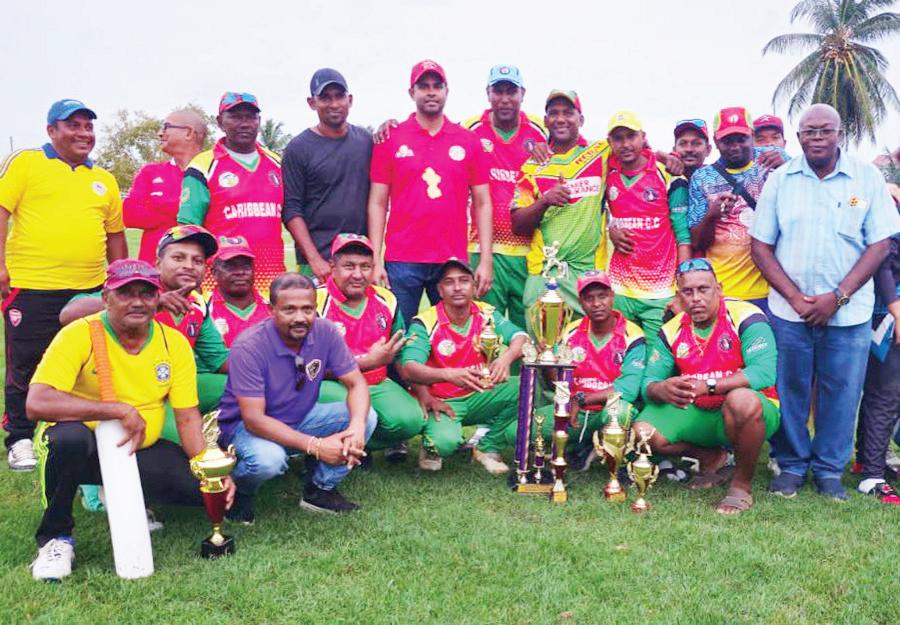
According to the organisers, the games will be played with the normal
bat and not the fiberglass bats that are being used regularly in
Guyana’s final match in the preliminary phase of the Cricket West Indies Women’s T20 Blaze tournament saw them being denied a perfect record by Jamaica as they lost their first match in five. However, the match was effectively a prelude to the final as both teams will play each other at Arnos Vale, St. Vincent and the Grenadines, today from 18:00h, as they finished the top two sides in the standings.
Jamaica’s victory on Friday afternoon at Arnos Vale was built on a disciplined bowling performance, spearheaded by a masterful spell from off-spinner Vanessa Watts, who claimed remarkable figures of 4 for 13,
including a maiden over.
Winning the toss and opting to field, Jamaica’s bowlers were immediately on the mark. Watts was particularly effective in dismantling the heart of the Guyanese batting order.
Among her key wickets was Guyana captain Shemaine Campbelle, who top-scored with a fighting 32 off 33 deliveries, embellished with four boundaries.
Support came from Nicole Campbell, who chipped in with 2 for 12, as Guyana limped to 83 for 9 from their 20 overs.
The chase for Jamaica wasn’t entirely without early jitters. When the experienced Chedean Nation departed for
12, Jamaica were at 51 for 3 in the 11th over, requiring a steadying influence.
That stability arrived in the form of Abigail Bryce, who anchored the innings with an unbeaten 30. Her composed knock featured four boundaries and guided Jamaica towards the target. She was ably supported by the experienced Chinelle Henry, who remained unbeaten on 12 to see the defending champions comfortably across the line in the 17th over.
For Guyana, Cherry-Ann Fraser (1-13) and Nyia Latchman (1-18) were the wicket-takers in a bowling effort that lacked the penetration of their opponents.
competitions, round-arm and risk bowling, and supreme balls.
Teams will be vying for cash prizes and trophies, which will be awarded to the winning and runner-up teams, MVPs, best bowler,
and highest runs scorer in an innings, player of the final, and all players of the matches in both categories.
Teams can register on or before Friday, 23rd May by calling 657-2022.
According to the organiser, the day's event will also see lots of side attractions for the entire family, and bar-b-que will be on sale with a beverage bar and music in place.
